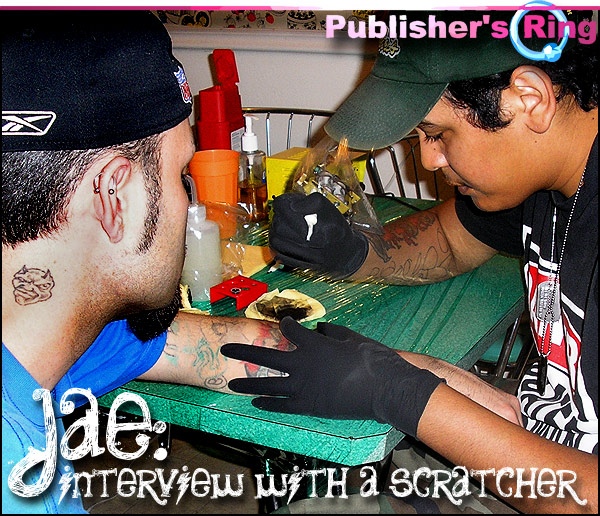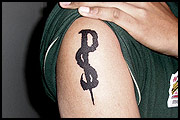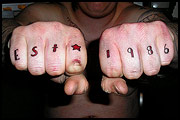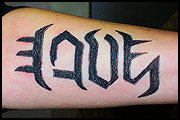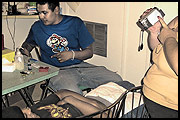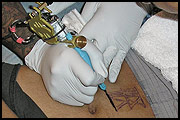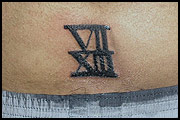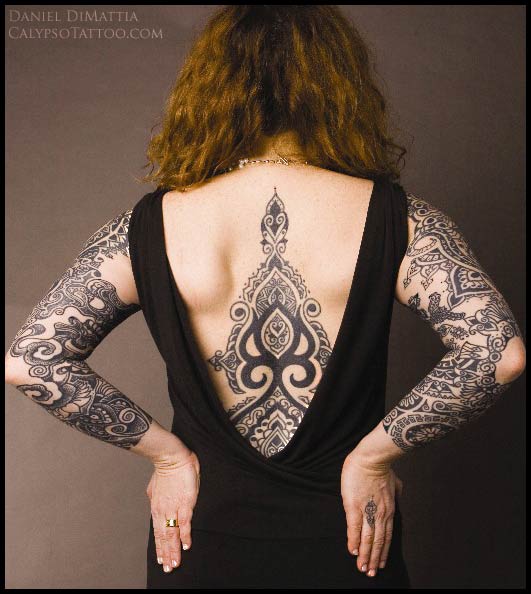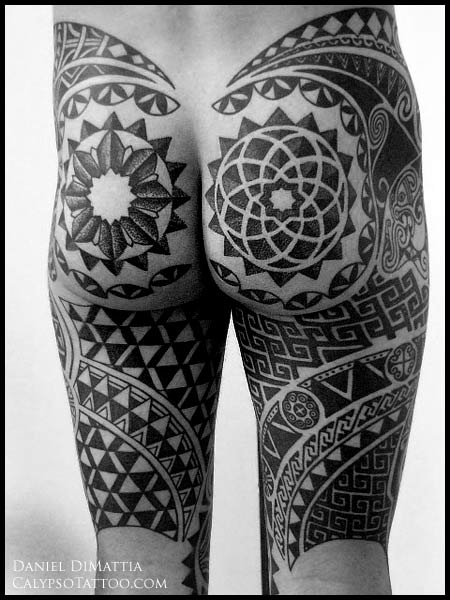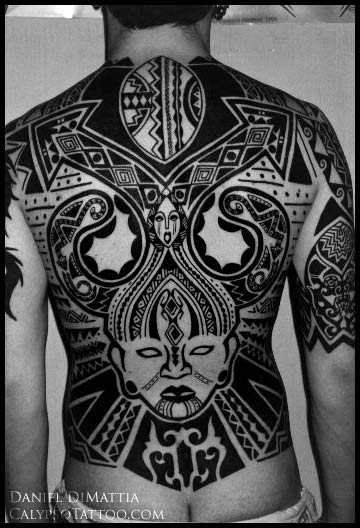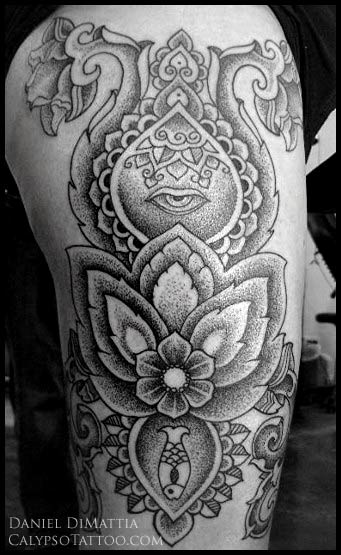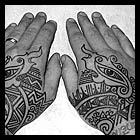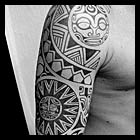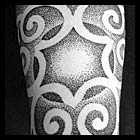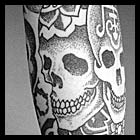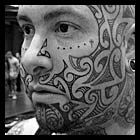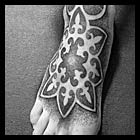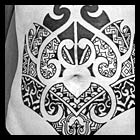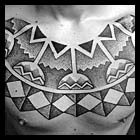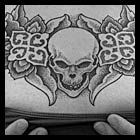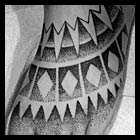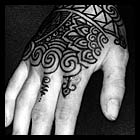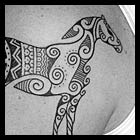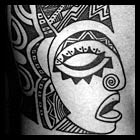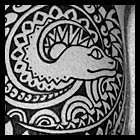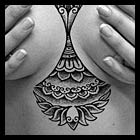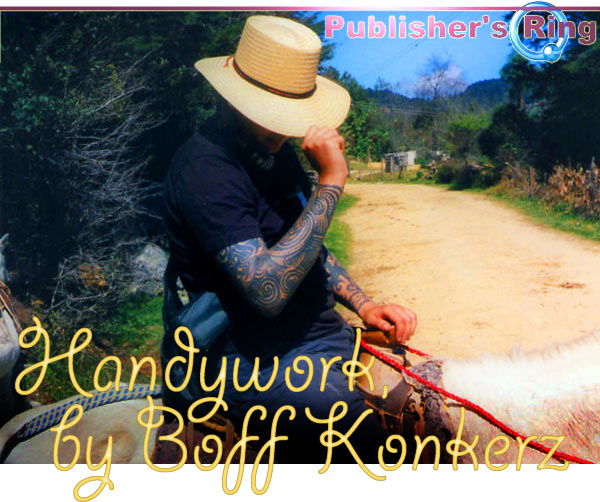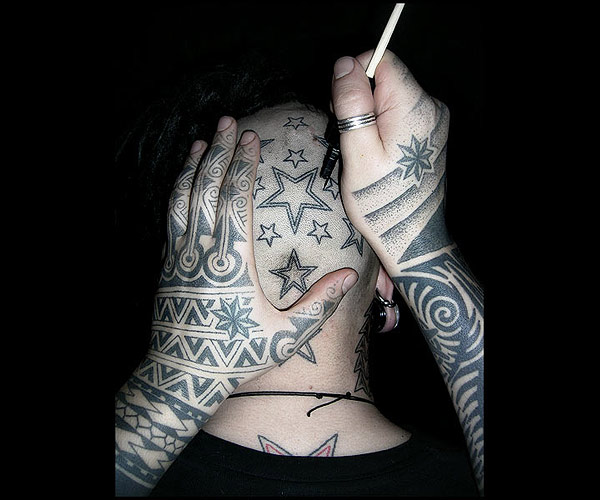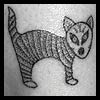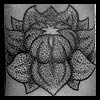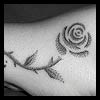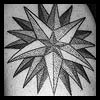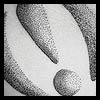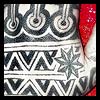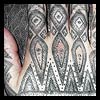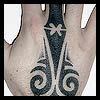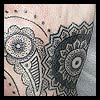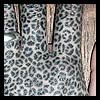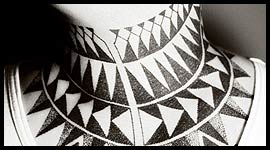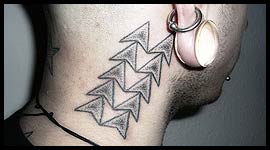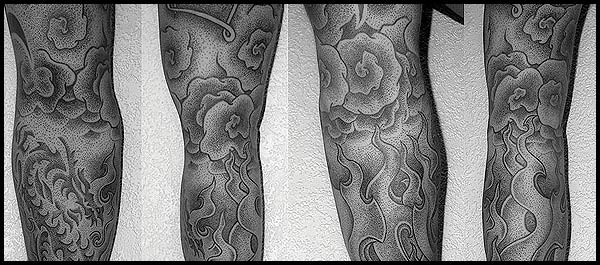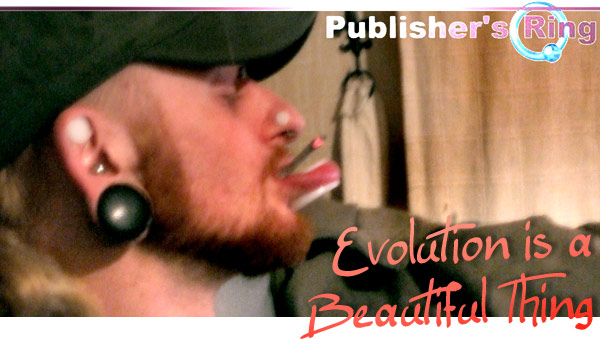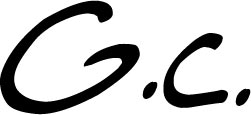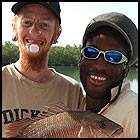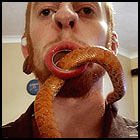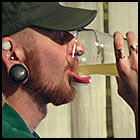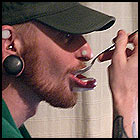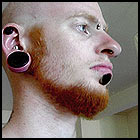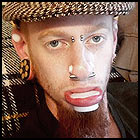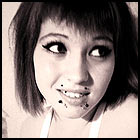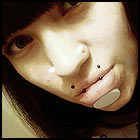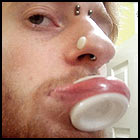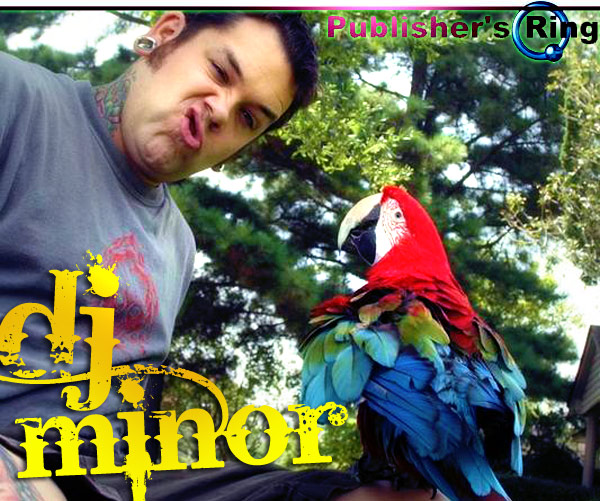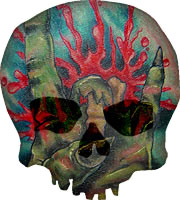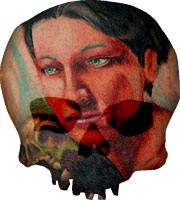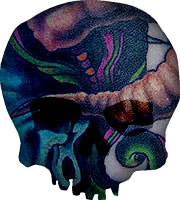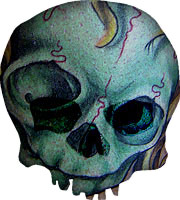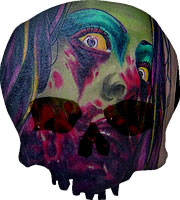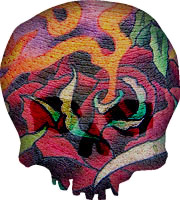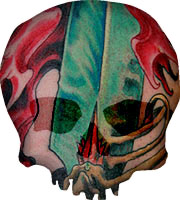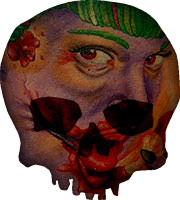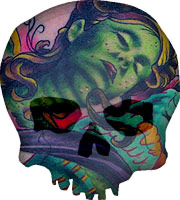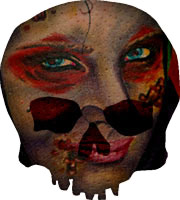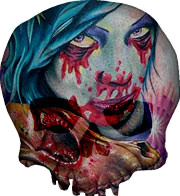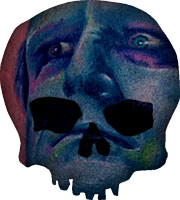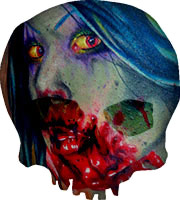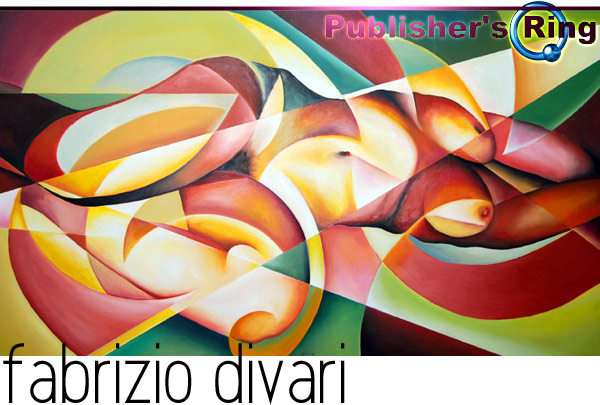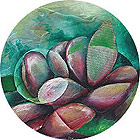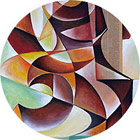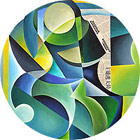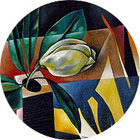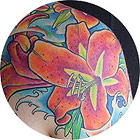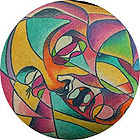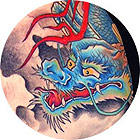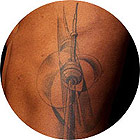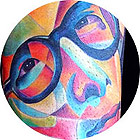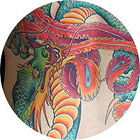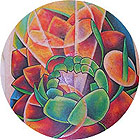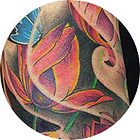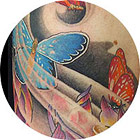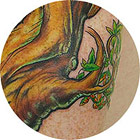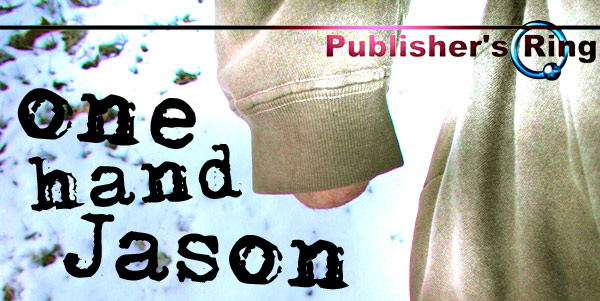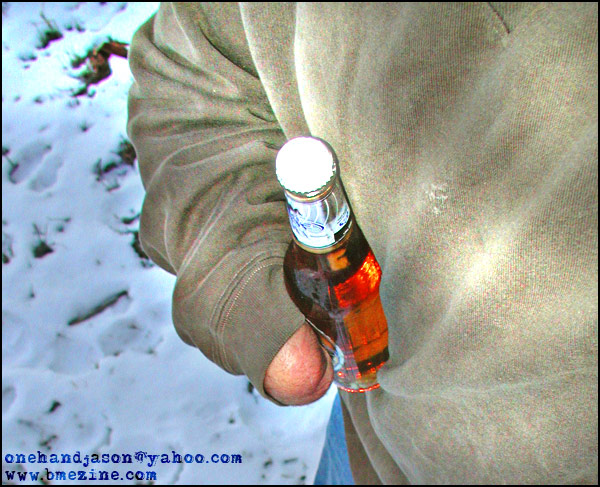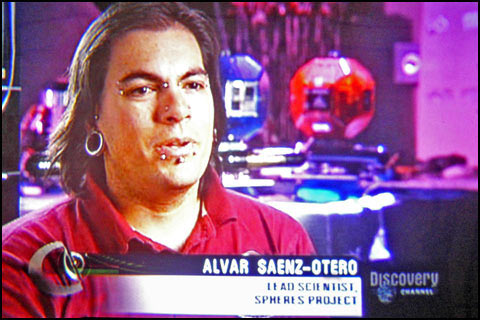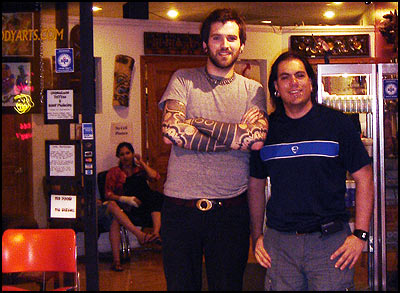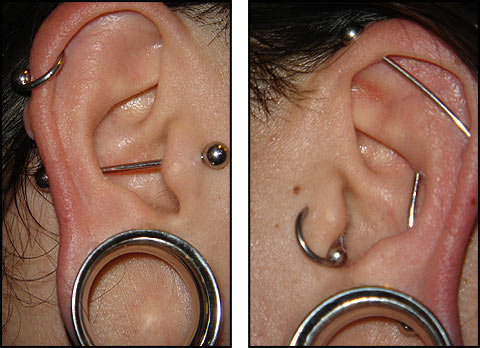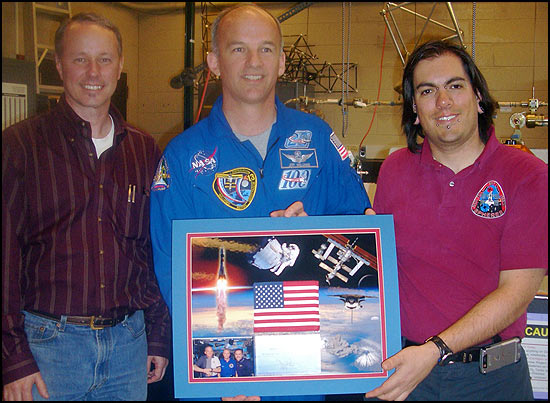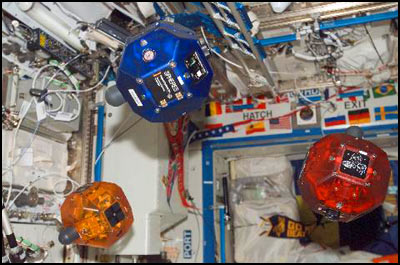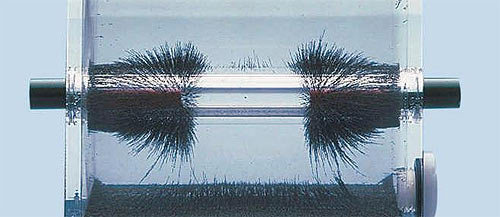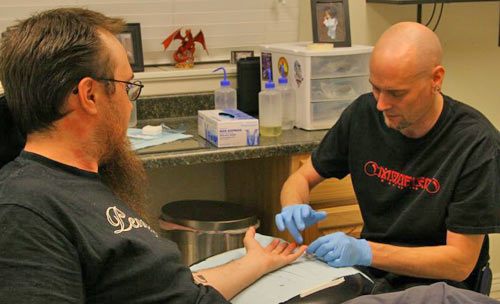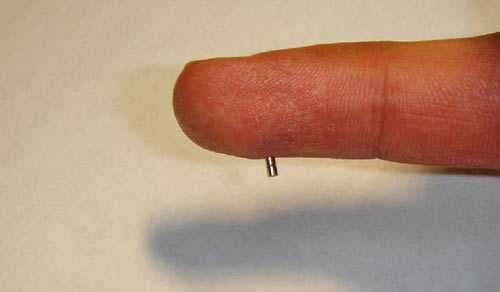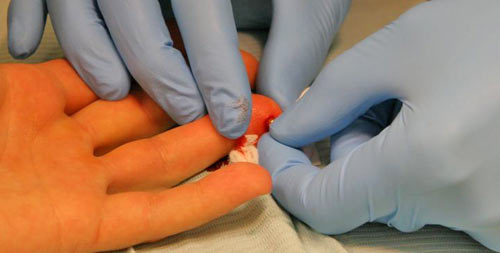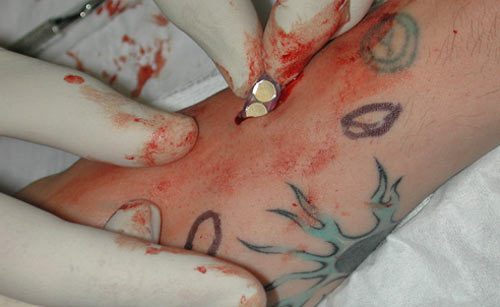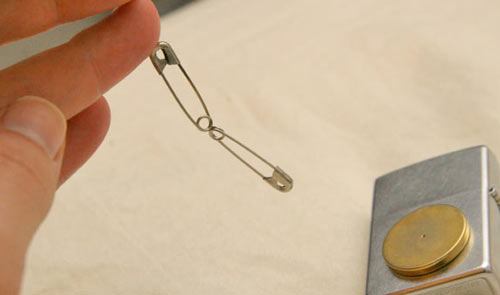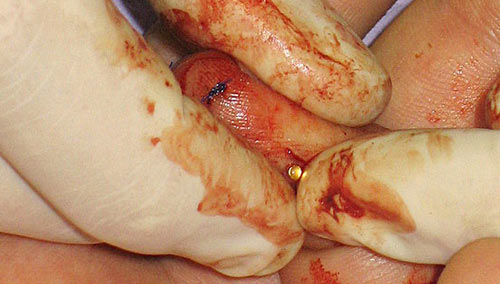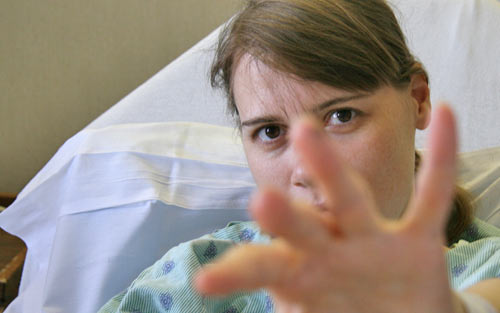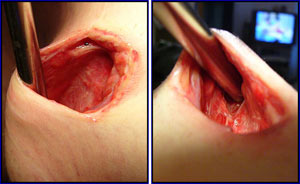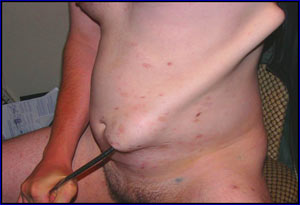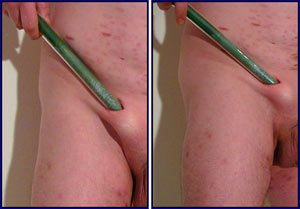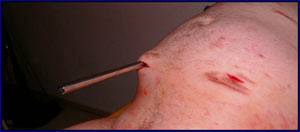|
“Scratchers,” both the outcasts and the heart of the tattoo subculture are our very own untouchables. They make up a large percentage of the tattoo world and all together do millions of tattoos, but they’re widely maligned and rarely spoken of by the so called “elite” — BME included — that publish magazines and websites. Of course this is the perfect formula for misunderstanding, and I thought maybe we were missing out on some interesting stories. My friend Jae, a home tattoo artist putting out work currently of dubious quality (sorry Jae!), was willing to put himself up on the block and candidly talk to us about his little piece of the tattoo world, and I thank him for that. Please note: In no way am I trying to encourage home tattooing or tattooing before you’re ready to do good work. I’m presenting Jae here not for his tattooing per se, because I like him, enjoyed hearing his story, and think many will relate to him as a person. * * * BME: Were you are artist as a kid? Well, I wouldn’t exactly say I was an artist, but as a kid I always loved to draw. I used to watch my “father” draw and wished that I was able to draw as well as him. He was always in and out of prison so I got to sit there and mess with his art. Sometimes I would trace it and hang it on my wall, and after a couple of years I was able to look at something and draw it free hand, but when I tried to create my own art it looked as though I had no kind of talent at all. I guess it did come a little later because now I can create my own art and it actually looks alright… BME: That’s actually a really nice story — so you learned to draw and became inspired about tattoos because they symbolized your father? Yeah, my father has inspired me in a lot of ways, mostly by his art. He tattooed in prison but that’s all he ever told me. He didn’t like talking about prison too much, except for the fights he’d get into and the dirty work he put in. BME: I guess you grew up around tattoos? I’ve been around body art since I was a kid. I used to watch my father tattoo and pierce all of his friends and their girlfriends. I was always so captivated by tattooing and wanted to try it so bad that one day I tried to make a tattoo quill. I got some India ink and tried to tattoo Batman on my hand but that didn’t work out so well. The first time I poked my skin the ink was so thick it wouldn’t go in… It kinda just sat on my skin, and then my mom walked in my room and beat the hell out of me, hahaha… So about a year and a half ago I finally decided to buy a tattoo kit and I’ve been tattooing since. BME: Haha, yeah, my mom wasn’t too happy either when she discovered that I was poking tattoos into myself in my bedroom as a kid. My father didn’t mind though — how did yours react? Well, my father was in prison when he found out about the whole tattoo thing, so he didn’t really care too much about what I was doing — I think mainly because he couldn’t do anything from behind bars so he didn’t really say anything about it. That was pretty much the last time I saw him because when he got out of prison he disappeared.
BME: What was the first tattoo you ever put on someone else? My first tattoo was a heart that I put on my wife’s wrist. Right now it’s just a really thick outline — it’s about the size of a dime. It took me like half an hour to lay the ink in because I didn’t know what the hell I was doing! She whined the whole time, hahaha, and then she decided that I needed one too, so she tattooed me as well. It really isn’t so much ffun when the shoe is on the other foot! She likes to watch me squirm, but she’s really good at what she does as long as she’s not mad at me! BME: Yeah, I remember filling in my first tattoos and how long it took, not knowing how to do it. How many tattoos have you done in all now? I’m not to sure how many tattoos I’ve done so far but I’m gonna guess anyway… probably about twenty-five. BME: What kind of tattoo equipment do you use and why? Where did you get it? I use a Gold-Slinger for my line-work and a Wasp tattoo machine for shading, and the metered power supply that came in my kit, and a Tread-Lite foot switch and clip cord. I also have a machine that a friend traded me for ink work. I’m not to sure what kind of machine it is but it’s pretty smooth running. I got most of my equipment from Superior Tattoo Equipment. It’s a little tattoo supply shop down the street from my house. BME: How do you control sterility and cross contamination? I usually cover my machines with baggies and wrap my surface with industrial saran wrap. I use disposable needle tubes and dispose of my needles in a sharps container, and I use medical wipes that kill everything from HIV to the common cold, and I use gloves. In some of the pictures I’m not doing all of these things because they were taken before I learned how to prevent bloodborne pathogens and cross contamination. BME: So in short, solving the problem by using disposable gear rather than an autoclave? Yes, I figured it would be the easiest way to do it. I don’t have to worry about not properly sterilizing something and making an enemy out of one of my friends! BME: What are your favorite sorts of tattoos to do? Pretty much anything that’s big — a tattoo that I can really get down with and throw my own little things into, to kinda make it my own… but little tattoos are fun too. I would really like to find someone that would let me go hog wild on their skin because I feel like I really learn more about myself when I’m tattooing a piece of art that I created myself… I pour a little piece of myself into it. BME: Do you like shows like “Miami Ink”? Honestly, I’ve never seen “Miami Ink” — I’m not much of a TV person, but I hear good things about it. I think that the popularity of tattoos is a good thing because people are opening up and accepting different ways of being. We live on a planet that is so diverse and beautiful — to shun someone else’s beliefs and way of life or personal expressions is so sad and closed-minded. I feel that everyone should embrace life and not just live it. BME: Would you actually like to tattoo for a living? Sometimes I think about it, and I’d love to find more clients, but then I remember that the clients that I do have have been with me since the beginning — mess-ups and all, and I can give them my all and not just another tattoo. I love to tattoo and I don’t want it to turn into just another job — I want to do it because I love it, not because I have to pay bills. I’ve got a day job for that! BME: I definitely appreciate doing it just for the love of tattooing, and I like how it’s a part of your friendships as well. Yeah, in a big way it helps us bond and all of that good stuff, and it also makes us trust one another more — it brings us closer to each other. I guess it also gives us something productive to do with our time instead of running around all wild and getting into trouble. I’ve managed to stay out of “the county lock-up” since I’ve started tattooing! I am trying to push myself to my limits by creating my own art and discovering exactly what I’m capable of doing with my creativity. I’ve been looking at a lot of other peoples styles and trying to use their art for inspiration. BME: Do you draw or paint as well, or do you prefer to work on skin? I draw a lot, but I love to work on skin — it’s so much more challenging when you can’t mess up. You don’t want someone walking around with a snake on their arm that looks like a penis or something! BME: Assuming you keep tattooing, how do you think you’ll feel about these early tattoos you’re doing now? Well, I’m not too sure — that’s a hard one! I think that they’re okay for a beginner, and I know I need some improvement, but I also know that when I’m in my prime I’m gonna look at them and ask myself, “did I really do that?” Hahaha… BME: Haha, no doubt. Free cover-ups in the future for all your current “victims”? Would you describe yourself as a “scratcher” right now? A “scratcher”? Well, I’m not to sure what that is but I know I’m a “digger”. BME: Sorry, “scratcher” is a negative term for someone who’s doing tattoos that aren’t the greatest… I think that’s probably how most people who are used to high-end work will respond. Oh. Well, in that case, I think I’m somewhat of a scratcher, but then again I’m still a beginner! I feel that no matter how good your work is there’s always room for improvement, and that’s something I strive for. I want to be the best that I can be — improvement is always a good thing, whether you were taught by the best of the best or if you’re self-taught like me. BME: I tattooed for a while and some of my pieces were pretty lacking technically, so I definitely don’t mean this in an insulting way — how do you feel you work compares to other work out there? Oh, no, I understand… I feel that my work is okay, and I know that if I got a chance to pull out all of the stops — and cigarette breaks — I could really create a piece of art that would leave people in awe. For now though, I’m probably gonna have to beg a few people to let me fix up some of my previous artwork, or lack thereof… If I had my wish, I would like to go to art school and learn as much as I can, and apply all that I’ve learned to tattooing, and maybe open up my own studio. I’d love to teach people who want to learn the art of tattooing to tattoo, because it kinda sucks to learn the hard way… but at the same time it’s an experience that I wouldn’t trade for anything in the world. BME: What do the people who’ve gotten work by you so far think of it? Okay — I’m not gonna lie. I’ve done some really bad work… Some work that those poor unlucky bastards are gonna regret! I didn’t take their money because I figured they had already paid enough, hahaha… Okay, that’s not funny… But seriously, most of my clients love my work. BME: If you could ask a high-end artist for advice, what would you ask about? Honestly, I’d love to know anything I need to do to improve my work — what should I do differently? What haven’t I been doing that I should? How do I shade from one color to another? How do I get more detail? What’s the best way to do a cover-up? How do I do realism and do portraits? BME: Sounds like there’s a long way to go — good luck, have fun, and thanks for agreeing to talk about this publicly!
|
Search Results for: publisher's ring
Post navigation
Daniel DiMattia (Calypso Tattoo) Interview in BME/News [Publisher’s Ring]
|
-Ken Cohen, The Way of Quigong
It’s been my observation that not only do great tattoo artists exude raw artistic talent, but that they are also people of great humor, kindness, and wisdom. I believe that Daniel DiMattia, a master of neo-tribal tattoo art and a decade-and-a-half veteran in the field has all of these traits in abundance. His beautiful blackwork has long been some of my favorite ink posted to BME, and it was a pleasure to finally be able to interview him. You can find Dan at Calypso Tattoo in Belgium. He travels regularly, so visit his website for more photos, contact details, and information on upcoming conventions he’ll be at.
* * * BME: What got you drawing? I’ve been drawing since I can remember — that doesn’t mean I was good — but I was always drawing, like a compulsion. I attended art academy, but only lasted a year and half because I felt I didn’t fit in. I came from the street, I was rough. I wasn’t sensitive and feeling creative vibrations from everything around me like the others. It made me uncomfortable so I left. But I always kept drawing and tried to teach myself. Then I found tattoos and it felt more real, closer to people, still creative but grounded in reality. BME: What kind of exposure did you have to tattoos as you were growing up? When I was young in Belgium, tattoos seemed limited to hand-done scratcher tattoos, usually on those who spent time in jail. So I was attracted to it because I wanted to be cool. At age 14, I took a metal compass and some ink and tattooed a cross on my arm — it was awful and my parents went insane. Fourteen years later while traveling around Europe, I met people with real beautiful tattoos, real works of art, and it inspired me. From then on, I decided I wanted to learn to create art on skin. I was living in Sweden in the eighties and boxing in a club where there were a lot of skinheads. Many of them had fine line, black and grey tattoos. Doc Forest, the Swedish godfather of fine art tattooing in Europe, was creating these illustrative, painterly tattoos. Amazing work. So naturally, I first went to him when I decided I wanted to learn to tattoo. He was nice but didn’t need any help at the time, so I was out of luck. Then I returned to Belgium and couldn’t find any tattooists here to teach me either. But I did find books like Ed Hardy’s Tattoo Time series and the first biker/tattoo magazines and this helped because they also advertised tattoo equipment. One advertisement offered machines, autoclaves, tubes, needles — the whole kit for beginner tattooists. The address was in New York and for me at the time, New York meant NYC, so I went to the States for the first time in my life. I ended up renting a room in Staten Island from another ad in the magazine. It was in a pretty dangerous place. A real experience for this guy from a small city in Belgium. I took the ferry to Manhattan and went around asking people — showing them the ad — where could I find the address? Turns out, it was in upstate NY. Three hours away! I called the place and they said I could have ordered the kit in Belgium with just a credit card. So, I went back, got a credit card and ordered. But before I did that, I tried to find tattooists in NYC. Tattooing was still illegal at the time and everything was underground, so again, no luck! It was an adventure though. As you can see from my story, it was really tough trying to be a tattooist at that time. No eBay for tattoo kits. No Internet for techniques and tips. You had to go out and search for everything yourself. BME: You’re self-taught? I started learning on myself. This is why my legs look so bad! I also started going to conventions like Amsterdam and Dunstable at the time and just watched the artists work. This helped a lot and also increased my desire to do the type of work that I was seeing there. Refining the craft is about practice, pushing yourself to do better but also experimenting — finding better equipment, and trying out new tools and techniques to see what works best. BME: Besides going crazy about the first tattoo you did on yourself, what do your parents think about your career choice now? My parents are Italian immigrants in Belgium. My father worked the mines and my mother worked in a factory, so their lives weren’t easy. Like many immigrants, they wanted security and tattoos didn’t represent that. But once I showed them that tattooing is not only an art but a business they came around — but it took a while. * * *
* * * BME: Tell me about how you actually started tattooing professionally. I started tattooing professionally in 1992. The first one was a snake coming out of an apple — not a very exciting start for the design but for me, everything was exciting just to practice how to do a good line and get that color in. For four years I did all types of tattoos, but I began to specialize in blackwork after more and more people were coming to the shop asking for tribal tattoos. I realized that there was more to blackwork than just traditional tribal patterns. There is more you can do with black ink. Because I am using only one color, I have unlimited uses of forms and design. To experiment with backwork on a large scale, in around 1996, I started tattooing local punks for free but they had to give me their backs and arms to do whatever I wanted. This is really how I started developing my own style. A lot of them came with me to conventions and showed the work I did on them, entered contests, and that’s how my work began appearing in magazines. Conventions helped promote my style of work. Again, at the time, Internet access wasn’t in every home here and there was no vast tattoo media as there is today, so people couldn’t see your work unless you went out there and showed them. BME: What influences you as an artist? I am influenced by any art that is well balanced, has an interesting shape and gives off a strong attitude, which includes many feminine shapes. I am influenced by gothic motifs, African patterns and masks, Asian art — all ornamental designs give me inspiration to create something different every time. I’m also influenced by my clients — some of my favorite works are inspired from the wild imaginations of my clients. BME: How do you usually work with a client to come up with a piece in your style? In general, I ask people who come to me what they are most attracted to out of my portfolio, whether it’s abstract dotwork or more traditional Polynesian or a fusion of ethnic styles. I then create a work that is special to the client. Sometimes I ask questions about the person’s life because I can incorporate design elements and symbols that tell the person’s story. BME: Do you ever turn clients away? I turn people away who are not certain of what they want. A person must be certain that they want to get tattooed. I never want anyone to walk out of my studio with regret. I love my job because it is the opposite — people walk away happy and that positive energy drives me. BME: Does working in black only limit you as an artist? Working in black pushes me as an artist because I don’t have a large pallette of colors to work from so I have to keep researching and finding ways to stay fresh and create different works for different people. While I love old school and Japanese work — and have some on my own body — it would take a lifetime to learn how to do it really well, so I’ll leave that to the others who specialize in it and admire their work. BME: I saw you’re doing more and more dotwork tattoos. There’s been some debate on how well these will age — do you feel they will do better or worse in the long run than “normal” tattoos? Dotwork ages very well. It’s less damaging to the skin, softer, and tends to heal better — all factors affecting longevity. But with any tattoo, it’s about how well you take care of it and your lifestyle. If you’re constantly in the sun, if you gain or lose weight in extremes, do drugs or any other activity that’s bad for the skin and your health in general, it will probably show in the tattoos. So if you lead a healthy lifestyle, you’ll protect your artwork investment. * * *
* * * BME: As a “famous” tattoo artist, have you had any “famous” clients? I had a famous footballer (soccer player) come into the studio once with his entourage thinking that I was going to stop everything to do a little tattoo for him — he didn’t even know what he wanted. These guys are treated like gods here but I could care less. I told him I was busy and to make an appointment — and leave a deposit so I know he’d come back. He couldn’t believe I would even ask such a thing and his crew was saying, “Do you know who this man is?” Kicking a ball around a field for a lot of money will not earn my resepct. Leaving a deposit will. I never saw him again. I’ve actually had a couple of ‘celebrities’ from the U.S. contact me, but I never worked on them because I could [would] not accommodate them the way they wanted. My favorite clients are the ‘average Joe’ as you say in English. Students, soccer moms, engineers, electricians, and a redheaded lawyer on occasion. People who come because they love tattoos. BME: Redheaded lawyers, eh? Ahaha! I found my wife through tattooing! We met at the NYC tattoo convention in 2001 and a couple of months later she was living with me in Belgium. (We married in 2005). We share the same passions and philosophy, which is a foundation for any couple. BME: If you could choose any three tattoo artist to tattoo you, who would they be? Wow. There are so many and so little space on my body! Xed from Into You in London — his compositions and dotwork are inspiring. I like the traditional Polynesian work of Manu and the hand Samoan work by Pili Mo’o, and I love the new color work from people like Nikko, Mike DeVries, and Tim Kern. BME: Quite a few of the tattoo artists I’ve talked to lately have mixed feelings about the massive mainstream popularity of tattoo reality shows like “Miami Ink” — how do you feel about them? I think it’s good and bad. These shows inspire people to get custom work and not just flash off the walls. It shows the process of tattooing and educates the public, which helps remove the negative stereotype about tattoos. But it also creates new stereotypes like a person has to have some great story behind every tattoo, which I don’t believe. BME: Any interest in being on one of those shows? I was offered an opportunity to appear as a guest artist but I never did because I didn’t want to play a part. I’m not an actor. I don’t think a TV appearance would make me a better tattooist. I don’t see how it would enrich my life. * * *
Dotwork Thigh
* * * BME: What do you think the future of tattooing holds? It’s always the same, under the skin! Whether it stays fashionable as it is now or loses its popularity, it will always attract those who feel the compulsion to mark their bodies. I believe it is a genetic drive in some people to mark their skin. This does not follow fashion. BME: I agree completely. How do you feel about tattooing faces and other public skin? I’ve done hands, faces, heads, necks — all public places. I take it very seriously. Decorating the face, to me, relates to the divine, the spirit of the person. It’s more than just decoration, like the hands, which are related to creativity. So in doing the face, the person must have a certain ideology, a philosophy behind the desire. BME: What would you do if you weren’t a tattoo artist? A massage therapist. A QiGong teacher. Something that will make people feel good about their bodies and their spirit. BME: Speaking of massage, have you experienced any physical problems from a decade and a half of tattooing? I did experience a great deal of back pain; that is, until I found T’ai Chi and QiGong. This unblocked my energy in my body and loosened me up so that I’m better able to absorb the tension from tattooing in difficult positions. I recommend it to everyone. It made such a difference in my life and I feel I can go on tattooing for many years to come because of it. BME: I saw a piece in your portfolio where you’d tattooed next to a large scarification piece — how do you feel about the rising popularity of other forms of body modification like this? If a certain body modification speaks to someone like tattooing does for me, then who am I to judge? BME: What are some tips that you would offer to young tattoo artists seeking to better themselves? Don’t be afraid to freehand your drawing on the body. It’s a great exercise in creating a flow and harmony with the body. Also, go to conventions and watch how your favorite artists work. These days, people are more open, so you shouldn’t feel shy to ask questions — but politely of course and at the right moment. I’m pretty free about giving advice to young artists at conventions, except those that scream in my client’s ear about what kind of needles I’m using, or spilling beer on my booth. BME: Have you ever apprenticed anyone? I did apprentice someone once, someone I treated like a son, and in return he showed me disrespect. It was a hurtful experience and I don’t have the desire to apprentice anyone again. Well, maybe for a lot of money when I’m old and have arthritis! * * * A Gallery of Tattoos by Daniel DiMattia * * * BME: Finally, how do people get in touch with you to book an appointment, what’s your typical touring schedule? The best way to get in touch with me is via email — although I always appreciate people’s patience because it can take me a while to answer. Also, English is not my first language so for very detailed emails, my wife helps out and I’m at the mercy of her very busy schedule. My touring schedule varies and this year we’re starting to slow down on the number of conventions we’re doing but there are always staples that I work like the NYC Tattoo Convention May 16-18 and the London Tattoo Convention September 26-28. I’m also excited to be a part of a new convention by Skin Deep Magazine in North Wales coast called the Tattoo Jam, August 1-3.. Especially for conventions, I usually take appointment months in advance, but people can always contact me to see if there are any cancellations. Beyond the NYC Convention, I also come to NY a number of times during the year to work on clients at Tattoo Culture in Williamsburg, Brooklyn. Of course, a lot of people travel to Belgium and we’re happy to help them make arrangements for their “tattoo vacation”.
|
Boff Konkerz Hand Tattoo Interview in BME/News [Publisher’s Ring]
|
– Thomas Carlyle
For at least ten thousand years tattoos have been installed by hand, poked dot by dot using a variety of manual tools. While most modern artists now use high-speed powered devices, artists like 36-year old Boff Konkerz are keeping the traditional spirit alive as he visits clients’ homes in England’s East-Midlands region and abroad in his travels doing handwork tattoos. Boff has been tattooing for four years now, and recently talked to us about his art and experiences. You can get in touch with Boff via myspace.com/tattoosbyhand.
BME: How did you get into this career? I don’t really think of this as a “career”, but I got into it by accident, or it was fate depending on your view. I enjoyed art as a child, but didn’t take it seriously until I started designing tattoos. I designed my first tattoo myself and later started drawing for friends. As a teenager I was into punk rock and tattoos kinda just went along with that. When I first started I honestly had no intention of doing it for a living, it was a skill I just wanted to acquire due to a genuine interest in the art form. I did it in exchange for pizza and beer back then… I actually can’t remember when I moved into tattooing for cash. Even now I’ll tattoo friends for food and drink. BME: Besides pizza of course, what is the normal pricing for hand tattoos? It really varies from job to job, but my basic quote is £30 ($60) per hour, if it’s big work I ask for a commitment of three hours a week until the piece is done, because of the slow nature of handwork I want to be sure they are committed to getting the piece finished. I am able to keep my prices low as I’m not paying rent on a studio. I also add any travel expenses onto the price per session. BME: How did you actually learn? I acquired my first piece of handwork from my good friend Xed Le Head and was interested in learning how to do it. I was already quite heavily tattooed by machine at this point, but had never had the desire to learn to tattoo by machine. When Xed did those first pieces of handwork the penny kind of dropped and I knew it was something I wanted to do. I was gonna ask Xed to give me some advice, but the night I was gonna ask him he wasn’t around, so Lucky Diamond Rich showed me how to make a needle and I did my first tattoo on him and tattooed myself that same night. Shortly afterwards Xed shared some of his handworking techniques with me and after that it was a process of practice, trial and error, and perseverance. BME: What would you say to someone who sees hand poked tattoos and says “I can do that”? How should someone learn? Find a hand tattooist and get some handwork — just watch at first, and then try asking some questions. And yes, try tattooing yourself. I’d like to say something in defense of “bedroom tattooists”. I read recently in a national newspaper here a criticism of bedroom tattooists by Louis Malloy [editor’s note: you may know him from TV’s “London Ink” or as “Beckham’s tattoo artist”]. The truth is half of my work is fixing terrible tattoos executed by “artists” working from tattoo studios. Anyone with the money can open a tattoo studio, and getting tattooed in a studio is no more a guarantee of getting a good tattoo than getting tattooed in someone’s home is a guarantee of getting bad work. Life ain’t that simple. Although I’m proud to be part of a DIY tattoo tradition, I’m not opposed to working in a studio. Job offers can be sent to me via email! BME: Speaking of Louis, what do you think of shows like “London Ink”? I think those shows are the fucking pits. I hate them, they are an abomination, and the worst thing to happen to tattooing in 10,000 years. Would I appear on one of these shows if asked? Of course! BME: It would definitely be an improvement if they added you to the cast! BME: You said you do a lot of repair work — how do you feel about scratchers and lower-end tattoo shops? Tattoos teach us a lot of things, you often learn more from mistakes than from the things you get right. A shitty tattoo can be the right tattoo for someone at that stage in their development, if it teaches them to think things through. You either walk into a tattoo studio with your eyes open or your eyes closed — your choice. Responsibility for your tattoo ultimately lies with the customer. I really like the idea of “healing” a machine inflicted tattoo using hand tools. BME: What’s the actual tool you use for tattooing? I use conventional tattoo needles lashed to half a chopstick. BME: How long do hand tattoos take to do in comparison to machine work? It depends on the design, but I’d say three times longer. BME: What influences you as an artist? I like to look at textile designs, porcelain, wallpaper… anything but tattoo flash. I love Picasso, Miro, Goya and Frida Kahlo, but I don’t think their influence can be seen in my tattoo work. BME: What are your favorite sorts of tattoos to do? I love to tattoo hands, regardless of the design. BME: Why hands? Because of how they move or how they’re always exposed to the public? Yes, the way they move, and the way they are exposed to the public, but also something on a more subconscious level… I don’t know what, but I’m happy to be involved with it. The leopard spotted hand for example, which took about twelve hours, is my personal favorite of all the tattoos I’ve done. Also, I think handwork is better suited for tattooing the hands than a machine is. You often get blow-out on the fingers with a machine, but I never get blow-out. BME: I know you’ve done necks, but do you tattoo faces? I won’t tattoo faces until I have my own face tattooed. Left is Boff’s neck by Xed Le Head, and right is a Neck tattoo by Boff. BME: Do people usually come to you with a design in mind? Usually they say something like, “I want a rose on my hand,” and I go home and draw something up, and nine times out of ten they like it and away we go. Even better is when they just say, “I want a sleeve.” Then I can really go to town. A lot of my work is cover-up and repair work, so obviously then I have to work around what’s already there, but I like the challenge of that too. BME: On a design level, and what works, what sort of tattoos work best for hand-poked tattoos? I generally only use black ink and a lot of dot shading. I can do solid black but it takes a very long time — shading with dots I believe I can do as fast as a machine though. Other than that, anything goes. On a personal level I dislike portrait tattoos and won’t do them — I think it’s just weird having someone else’s face on your body! BME: What does the future of tattooing look like to you? It’s only gonna get bigger, which will be both a blessing and a curse. As any industry grows it also diversifies. This will mean that the industry will be taken out of the hands of enthusiasts and uploaded into the mainstream dominant culture. Most tattooing will become formulaic and be tailored to the mass market. The plus side to all this is that the art will be big enough to support an underground scene. Think major record labels and indies in the music industry — this is already well on the way. BME: Have you experienced physical problems from tattooing? Yes, I have problems with my right wrist, but this could be from masturbating. BME: Have you done any touring? I took my tools with me when I went to India recently, and I thought I’d tattoo a few backpackers out there, but I only tattooed Indians, which was great. It’s better to tattoo in my own area as I have a reputation there and so people trust me. People who’ve never encountered handwork are often wary of it, and they often think it’ll hurt more — most of my clients say it hurts less — or that the work won’t be to a high standard, which it is!
BME: Is this your full time job, or do you do other work as well? It’s my only job. I earn a living, but it’s not reliable. I try to limit myself to five jobs a week — Monday to Friday, with weekends off. Having said that I did seven tattoos last week, and one this week. I like to do one tattoo per day because of the traveling involved, but if two of my customers know each other, I’ll do both of them in the same day at the same house. This happens a lot, as all my advertising is by word of mouth, so many of my customers know each other. I tattoo a lot of people who are related to each other. I don’t put out posters or fliers or promote myself in any way. BME: Finally, if you weren’t a tattoo artist, what do you think you’d be? A rentboy, which I was before tattooing. BME: On that note, thanks for talking to us!
|
Evolution is Beautiful — BME/News [Publisher’s Ring]
|
– George Sheehan
Like Toph who I also recently interviewed, G.C. (iam:G.C.) is one of a growing handful of people choosing to stretch their lip piercings out to dramatic sizes, defining an entirely new aesthetic code, unique in Western history. As well as other stretched piercings, he currently wears a 41.5mm plate in his lip, and took some time out to talk to us about his successul life — which you may be surprised to hear is full of fishing trips and a cadre of unpierced friends.
|
DJ Minor Tattoo Interview in BME/News [Publisher’s Ring]
|
– Dr. Foster, Dawn of the Dead
After rejecting art school for a stint in the Navy, DJ Minor commiserated a few bad jobs at a tattoo shop near the base, and not long afterwards found himself tattooing tribal armbands on GIs… He just “kept waking up as a tattoo artist”, and the rest is history. You can find him at TastySquirrels.com and KantReed.com, and on Myspace as djminor.
* * * BME: How did you get into art and tattoos? I wasn’t drawing portraits of my friends at age three or anything, but I was steadily drawing from the third grade on. I got into photography and technical illustrations in high school due to a very persistent High School Art Teacher. She got me all revved up about a serious art career — as long as it wasn’t photographing kids at SEARS she would be excited. Time goes on and I got a full scholarship for an art School in Savannah, GA, which I turned down for a trip to boot camp. This threw me into a different art reality of the tattoo parlors beside the base. I would have been awesome at SEARS though. BME: Were you also exposed to tattoos as a kid, or were the base parlors the first time? My uncle was in the Navy and was covered with little demons, and flowers from all over the world. It was really interesting since South Carolina, where I am from, didn’t have legal tattooing, or many heavily tattooed people. When I got out of the Navy myself I was covered in the kind of tattoos that make laser treatment techs rich — but visibly covered none the less. Living in the southern heartland didn’t really take well to a twenty-something all sleeved out with naked ladies and skulls. After a few bad job decisions, I decided to take a few hours break at a local tattoo shop with an artist named Crenshaw. Knuckle head thought I was still enlisted, and was crackin’ on me for my lovely collection of art. Next thing you know, I am rewiring broken power boxes and tattooing GIs from Fort Gordon with Crenshaw! I really don’t know what happened after that — I just keep waking up as a tattoo artist. BME: Tell me about your first customer? So my first customer walks in, and throws down with some seriously sweet red tribal arm band action. Oh yeah! After probably two and a half hours longer then he was ready for, we wiped off my glorious red masterpiece. The client base at the time was a lot different from the tattoo show watching public of today, a little less informed about current trends in magazines and the art behind tattoos — they really liked tribal and Old English tattoos!
BME: Obviously your uncle doesn’t mind, but what about the rest of your family? My grandfather was a Pentacostal preacher from the South, and my mom still thinks one day I’m gonna wake up and decide against them. Most of my family just doesn’t care anymore and it’s just who I am to them. The South isn’t like the rest of the country as far as ink and body mods go — I’ve been on the road for many years traveling, and I’m really happy to be away from the negativity from all of that Bible Belt mentality. BME: Did you teach yourself to tattoo when you, I guess, just started doing it? How do you improve your work? Tattooing was a sink or swim atmosphere and very intense. I quickly realized I needed more training, so I started traveling more and more until I just became a gypsy. I’ve been to every corner of this country I could, trying to learn more, and immersing myself into tattooing around as many talented artists and tattooers as possible. I owe any successes I have had over the years to my friends. Tattooing was a very private affair a few years back. The open ideas, and willingness to trade information of the last few years has really helped increase my tattooing technically. Lots of practice, and lots of technical critiques really have helped me push my tattooing to some very different places compared to when I first started. Fortunately the ability to tattoo more technically opened the arena to better art, so I worked on drawing and painting. Both mediums helped push the other. It’s kinda nice working with different mediums. You get stale and bored if you don’t. Recently, my wife has been pushing to work with oils more and more, and I’ve been on an art vacation the last three months while my the shop is being refitted. I really get super critical with my work. I learn from each piece — little things to make it better, cleaner, and more crisp than the one before it, and improve on the next one even more. I try to outdo myself each time. Critique from others is a large part of how I get better, so I don’t much care for open forums. You get a lot of washed out opinions on the Internet from people trying to be nice. I keep mine for artists I respect and that influence me. No matter how good you are, or think you are, outside eyes often can pick up things you never see yourself — whether it’s line weight, or contrast, you often just need a little extra outside opinion to help. I also often try to incorporate as much non-tattoo art influence as possible too. There are so many possibilities with this medium that it just seems a waste not to.
BME: You said you’ve traveled and worked with a lot of people — who are your influences as an artist? Tattoo-wise, it’s always been Joe Capobianco, Josh Ford, Josh Carlton, and Eric Merril — guys like that have been on my radar since before I was a tattooer. Recently, people like Gonz, Jason Wheeler, and a lot more West Coast artists have been drawing my attention to more traditional themes and styles. I am looking forward to going back out to Reno and LA to work around them as much as I can. Currently, I am in Houston. Obviously Nate Beavers is a name heard a lot lately, and working down there with those guys was a pleasure. Rick Clark and CMFL are workaholics and make you feel guilty for not painting and working more. But, in this business, there are always amazing artists popping up out of the woodwork making your jaw pop. However, in saying that… I’m still gonna cut off Kyle Cotterman’s hands — maybe just his fingers, haven’t decided yet. BME: Who would you choose to tattoo you? Josh Carlton, Joe Capo, and my wife Jen — but I could name lists of people if I had more skin and time. Joshua is a quiet tattooer with loud ideas, and just slick tattoos. His Alla Prima Ink just really looks cool healed. I’d glady trade my black arm for a sleeve from Josh — might be time for some more laser removal? I still have a lot of open skin and I have barely been tattooed at all in the last few years… I would love to get some pin-up action from Mr. Capo. Finally, my wife is my new live-in tattoo artist. I love her work, and we are about to start my back project. I’m super-excited, but she is super-preggo, so I have to wait a little while longer. Once we move back to Reno, we will start on it. BME: What have your favorite places been to work in your travels? Each area I travel to really helps me expand. Hawai’i was still the most awakening experience I have had artistically, but the majority of my education was in Atlanta. However, every pin-poke on my map has increased my artistic vocabulary. I really can’t say enough about traveling — I made myself a promise, and this is my last year of being a gypsy full-time. I’m turning into a homebody as of late, so you’ll see me on the West Coast as a fixture not just a glimpse.
BME: What kind of machine do you use? You can tattoo with a quill from a sea urchin with black soot from a fire, but I’m too lazy for all that. I still run electromagnetic tattoo machines. I haven’t given into the air machines yet, but who knows. Most of my machines are just random one-offs from different machine builders like Dave Riegel, Josh Ford, BadBrass, and what-not. I wish had more, but my buddy Jay in Atlanta talks me out of most of my irons when I go home for a visit. I have a huge ink rack from several companies, but ink brands don’t matter much. You just have to apply the ink to make a tattoo bright and solid. I got one of the fancy Eikon meter power boxes. I never really used the meter, but it glows all pretty in my booth. BME: What kind of tattoos are your favorite to do? Tattoos without a huge back story. I am sure that everyone could come up with the most meaningful tattoo ever to be on TV, but there is nothing as fun or rewarding as doing a tattoo just because. No reason or rhyme — just a tattoo because it looks cool. I got an elephant shitting out a Dorito on my neck. It doesn’t mean anything but the fact that I have a nacho flavored chip on my shoulder. Most of my clients are pretty chill. I do a lot of odd zombie stuff lately. Not because I want to; people just like dead shit. Who can blame them? BME: What do you think of those TV shows? They certainly push the idea that everything needs a long story behind it. Would you appear on one? Hell yeah I would be on a show! I’d be the jerk from any reality show. I love the interest that the shows have brought to tattooing. I am just not really happy about the side they show on TV — any business will have drama. You don’t get a real sense about what is really going on tattoo-wise… “Come back in five minutes, I’ll have that sleeve drawn up and stenciled for ya.” Um, yeah, sure. It may take a little longer in reality. Oh yeah… And you will not find a cat running around in my shop, or a tiger, or a bear, or even an alligator, oh my. I got a zoo at the house for that. The other shows like that Versus show were awesome, but didn’t have the drama the seventeen year-old MTV crowd wants to see like on Big Brother or what-not. Tattoo shows need to show more art — more conventions and art shows. Follow an artist from two weeks out till the day after a convention. That would make for a better show.
BME: Will you tattoo faces and other “public” skin? An eighteen year old walks in and says, “Hey, tattoo this name on my neck…” Well, he probably won’t be getting tattooed. But if you have a fair share of ink, and understand the responsibility of a body mod, then it’s your choice. Don’t think there isn’t a price to pay. Walk up into any store with huge piercings or tattoos and you will quickly learn. People are less shocked these days, but sometimes, you still got to warn or educate a client before they take on certain work. BME: Do you turn many people away? Not too often… most of the clients I turn away are actually just referred to someone else who would be better suited for what they want. Most of my clients are here because they are open to my work already, so most often, people who come see me get me. If that Polynesian back piece is still on your mind, then I’ll hand you Ronson’s info and get you out to Oahu though. BME: What’s the best way for someone to get into the industry these days? Any advice for wanna-be tattoo artists? Be a well rounded artist way before you try to be in this industry. Make your own path, and don’t look for a quick fix. BME: What do you think you’d be doing if it weren’t for having fallen into tattooing? I would have to marry a rich girl to afford my Xbox addiction! Maybe a porn star… who doesn’t wanna watch a chubby guy wiggle on an ugly chick for fifteen seconds? BME: Think you’ve found your life-long calling then? Tattooing for my whole life? If this old body will hold up, I will. My tattoo retirement plan is a little lax right now, but my wife is younger, so I’ll just make her work when I get old. BME: Is your body starting to give you problems? Yeah, I got some nifty glasses — I look like an old man creeping up with my newly founded gray sprouting hair. My back is ok as can be from sitting on painfully flat chairs for the last decade. I would really like to see some major advancements in tattoo chair technology. BME: Finally, what do you think about scratchers and their role in tattoo culture? Trick question, right? BME: Haha, definitely not… thanks for talking to us!
|
Fabrizio Divari Tattoo Interview in BME/News [Publisher’s Ring]
|
Pablo Picasso
When I first saw Italy-born and now after various international locations Toronto-based — his Parkdale studio is actually just down the street from the BME offices — tattoo artist Fabrizio Divari’s work (www.divariart.com), I was struck that he appeared to be an artist in the traditional sense of the word first, and a tattoo practitioner second — it’s been my experience that it tends to be the other way around with tattoo artists. We recently had a chance to talked about both art and tattoos. Paintings by Fabrizio Divari * * * BME: Have you always been interested in art? How did you get into tattooing? I’ve been wanting to be an artist since as early as I can recall. I was born in Rome and grew up between Bologna and Milan, where the artistic and cultural richness that surrounded me all the time was certainly overwhelming. Everywhere you glance, you see art and beauty: in the shape of architecture, visual art, even the natural landscape. This doesn’t mean of course that everybody in Italy is an artist. I guess I was gifted — or condemned — since birth with a certain type of sensitivity and a very deep appeal for what we define as art. Since childhood I was especially mesmerized by paintings, and I started scribbling and sketching as a natural response to my environment. My first contact with tattooing was totally accidental. While traveling through Spain one summer in the early nineties I bumped into this guy who was tattooing himself on a beach, sat with him, and immediately wanted to try it myself. We’re talking about three sewing needles wrapped together with a string of cotton and some Pelican ink — every poke became one black dot. When I got back to my seven or eight friends at the campground where we were staying I pretty much tattooed all of them with very simple symbols taken from an old record by the “Cult”. Every song was a different sign and they all got them — me too of course — with not a trace of meaning for any of us. We were teenagers, all we cared for was to rebel in any possible way and this was just another sweet deal. However, once I was back in Milan, I actually started to get very interested in the process and tattoos as form of expression: I built my first machines using metal pens and a small tape recorder’s engine. I remember I didn’t even have a switch so to get the power — a really high power — on and off. I had to plug and unplug the cable to the wall! At the time, Milan, and the south of Europe in general, was not really progressive in this field. Tattooing was a shady, underground activity perpetuated by an ignorant elite whose only claim was that they traveled a bit here and there. Because of this, and despite the fact that none of them had any artistic skill, they were acting like Hollywood stars and were very careful to not let the secrets of the trade leak out. It took quite a lot of investigating and asking to get the basic keys that I would practice on myself, and again on my friends once back home. This painful process went on for a few years before I finally saw the possibility of making a future living of it. Slowly but inevitably I saw the potential of translating what I was already painting on canvas onto a different medium, one that would be in constant evolution, given the nature of the skin, and at the same time quite eternal. BME: What did your family think of your decision to become a tattoo artist? Ah! My family was quite horrified when they realized I was really undertaking this weird path — in conservative Italy it wasn’t even worth the name of “career” at the time. I doubt it is even today. Not to mention that my father used to be a high officer in the Navy — but not one prone at all to getting sailboats tattooed, as he was very disciplined. Sometimes I think I was adopted, for I can’t even pronounce this last word without panicking, haha. To their rescue though, I must admit that in the last few years they turned out to be incredibly supportive and very proud of me and the seriousness of my job. BME: How do people in general respond when they find out you’re a tattoo artist? I guess these days, here in Toronto, it’s certainly accepted. I never brag about it, ever. I’m reluctant to say what I do for living (unless being asked of course) and don’t really like to talk about tattooing outside my studio. And I hate when as soon as they know you’re an artist certain people suddenly go, “oh my god! I wanted to get a tattoo for so long.” Fuck it, why didn’t you? I’m sorry, but I really don’t care about those characters that need to be part of a conversation in any possible forced way… Not for me. BME: How do you grow as a tattoo artist, in terms of improving your craft? When I started in Milan it was almost a joke — it was difficult to get any help at all, but I did meet a few decent souls who directed me the right way. Then in 1999, I took off and moved to Costa Rica where I worked at the same time in the capital, San Jose, with good guys, and at a little studio that I opened on my own on the Pacific Coast. After two and half years of tropics I moved to Miami and then New York City. Everywhere I went I had my machines and worked with many different artists, some mediocre and others very talented. This exchange and cooperation is at the base of any improvement. BME: What advice would you give young tattoo artists, or people who want to become tattoo artists? Keep drawing day and night. This comes above of everything. You want to master completely the capacities of reproduction — and, therefore, creativity — of pretty much everything. Your specific direction, taste, and style will naturally occur with time, but before that stage, every artist should be above all a great illustrator, able to draw anything, and in any style. This sucks up a huge amount of time and energy but in my opinion it is the only way to go and become real. Nowadays, tattooing has become such a trendy thing and so profitable that most of the newcomers skip this altogether and jump into the craft without the slightest clue or talent. We see the results of it every day — I know I do, and I don’t particularly like doing cover ups. BME: I see that a lot of your tattoos are in the same style as your paintings? My favorite pieces to ink are my own paintings. Nothing makes me happier, proud and rewarded as when a client commissions a piece of my own art. Right after that comes Japanese themes, although I try always to give a little twist as far as coloring and detailing go. BME: Who are your least favorite clients? I don’t like the confused ones — those who are constantly undecided of what, where, and sometimes why… I can’t stand this. Thankfully, these types rarely contact me. Let’s say you want to get a tribal for instance — if you navigate through my gallery you won’t see a single one, so I’m not your man. On the other hand, you mostly see in it large pieces, fairly detailed, and rendered with rich, bright colors (either Japanese, or the cubist-like fashion I paint my canvases in), so if you’re looking for something like that you reach for me. Custom design is also a staple with me: when you walk into my studio you don’t see any flash on the wall — just my art, both on skin and canvas. I draw every piece from scratch (unless it’s a reproduction of a canvas by old Masters), starting from the client’s ideas and insights, but applying my personal touch and creativity till completion. BME: Do turn many people away? I don’t turn people away too often, although it happens of course. The only reason I do this is generally for artistic reasons. I guess I need to be captivated and challenged by the proposal in order to take you in — I have no fixed rules here. It can be anything really, although I do have preferences, but again seeing my gallery you know what I like to do and if you decide I’m your guy then generally you want something in these lines. Natural screening I suppose — can’t complain. I feel bad every time I say no though, for in a way I have the impression that I’m offending you or your ideas; that’s why I always apologize when this happens and try explaining my point of view as an artist. I must admit that in most cases these people are very appreciative of my honesty and regard my opinion as valuable. BME: How do you feel about the massive popularity of tattooing these days, and shows like “Miami Ink” that popularize them even more? I think shows like “Miami Ink” have definitely helped the “image” of tattoos overall. Getting tattooed is now much more publicly accepted and it’s not something taboo or misjudged. The majority of people who up until a while ago used to think about tattoos as necessarily linked with something shady or evil — jail, prostitution, drifters, drugs, and so on — accept it now, and at times get also excited about it. If you own a TV and had never been interested in tattoos, it’s now pretty much in your face and nobody can deny a deep sense of intrigue and mystery that this curious art inspires. People are now much less ignorant about tattooing and more cautious in searching and deciding if, what, and by whom, they will eventually get tattooed. In a way it’s sad that it took a massive corporate media to make tattoos be accepted and admired. On the downside, I think that in these shows they talk way too much about crap that I don’t care of — the stories behind the images — and far too little, if at all, about the technical process of tattooing, its history, and geography. I was actually offered by a producer client of mine to create a show right here in Toronto but I couldn’t do it. I’m a rather reserved artist and am reluctant to transform such a delicate art and relations I have with my clients into a circus for strangers. I like to think my integrity as an artist forbids me to sell what I reached in twelve years of experience to TV. BME: As a part of this mainstreaming I’m sure you’re happy though to see that tattoo artist is starting to be shown in galleries and treated as legitimate “art” though? Yes, I believe it is a great sign when you start seeing tattoo-related art showcasing in galleries. It means that finally it’s been recognized as a form of fine art, and in my opinion tattooing has legitimately earned a place among painting, sculpture, architecture, and such. What you see around now more and more often are tattoos that truly are pieces of art, and most significantly even is that often you can name the artist right away — this means that certain artists are in fact creating a “signature” style, something that is peculiar to their specific way of representing the art of tattooing. If you see a piece by Filip Leu, you don’t need to ask who’s the author of it, you just know it. And so Guy Aitchison, Shige, Bugs, Admiral, and many others including my friend Rob here in Toronto… and myself, hahaha. BME: Thanks for talking to us!
|
One Hand Jason: BIID Interview in BME/News [Publisher’s Ring]
|
Matthew 5:30
My friend “Jason” (not his real name) is one of thousands of amputees living with a huge secret. Years ago, after a lifetime of anguish due to having an extra hand — essentially a birth defect in his opinion — he took the radical step of amputating this hand just above the wrist. He’s never regretted his action, and feels that now his body is “right”. Other than his former BIID (“Body Integrity Identity Disorder”) affectation, he’s completely normal, and now that he’s surgically corrected himself his life has improved drastically. Jason was kind enough to speak with me candidly about his experiences. * * * BME: Tell me a little about yourself and your life — how should I introduce you? Let me be blunt — I staged an accident. Nobody’s doubting it, and my friends and family, so many folks, came together for me back then, raised a lotta money, prayed, and said such sweet, loving things. There’s no way I want enough details to get out there that they could connect up me with my ‘accident’, with the person you’re interviewing, who’s voluntary. BME: I understand completely — what was the “accident” you used to remove your hand? I don’t want to be hugely specific, but I used a very sharp power tool, after having tried out different methods of crushing and cutting. I know first aid so I was able to stop the bleeding with pressure, but I was worried that I could pass out and not call for help and lose too much blood. No worries, though, I guess I’m in good enough shape that I didn’t even feel dizzy. My goal was to get the job done with no hope of reconstruction or re-attachment, and I wanted some method that I could actually bring myself to do. I did experiments with animal legs I got from a butcher. It’s lucky I thought of that, because some of my early attempts were total fuck ups and would have ended up with a damaged hand which might have had to undergo years of painful reconstruction, and worse yet, no amputation. BME: How was the aftercare and healing? I had some shooting pains, almost like electric shocks in the end of my stump at first, as the cut nerves tried to figure out what to report. That was gone in a couple months, though for some people it goes on for years. Aside from that, my stump was completely healed when they took the bandage off a couple weeks later, with just a faint red line across the scar that went away in a couple months. In some parts it was quite sensitive, with strange mis-interpretations of sensations — like when I touched something cold, it got back to my brain as the sensation of burning. One real weird sensation was to run my fingertip from the top to the bottom of my stump, across the scar. It felt like I was running my fingertip right through my arm! Now it mostly feels like it ends where it ends. I can feel things with it, but nowhere as precisely as with my fingertips. A huge surprise at first was how much lighter my forearm was. Maybe it was because of that, or maybe because my brain didn’t ever completely accept that I had a right hand in the first place, but it didn’t take long to accept that I couldn’t reach out and grab stuff, and instead had to pinch things between my stump and my body, or a table or something. BME: Can you still sense the missing hand? On the whole, how do you like it? I can sort of sense my fingers, and can imagine that they’re moving, but I’m also really aware of the end of my stump — about 5″ below my elbow — and what I can hold with it, and how far it will reach. I feel like my body is correct at last, and that’s a way cool feeling. I’ve adapted to doing everything one-handed — not that I can do everything. For a while, my tennis game was off since I had to do everything left-handed, and my balance was a little screwy. Skateboarding took a bit of adapting. Running, swimming, no problem. I can’t play that cool jazzy sax anymore… that hurt… but I’m getting into hand drumming. Strange, but it works! I guess there’s a period of fighting it, but then your body just goes, “Hey, this is me now… what a groove”.
BME: Is there anything you’d do differently if you were to do it again? No, it came off better than I ever imagined. BME: Hahaha, “came off,” ok… Will you do any more amputations? No, my body is just right now. BME: We’ve touched on it, but I guess now the big question — “why”? I’m one of those body-integrity-disorder (BIID) dudes. As long as I can remember, having two hands was a defect in my body — something that was not meant to be. For me philosophically, it’s totally different from body mods, which I also have. I don’t think I had any choice. My right hand just didn’t belong to my body. As a little kid, I soon learned that I was the odd one out, and that amputation was a bad thing. My parents reprimanded me for staring at amputations, but it was totally mesmerizing for me. Somehow I made it through high school, with hormones and peer pressure doing their best to mask my feelings. In college, I met a wonderful woman, and our love kept my thoughts of amputation at bay at first, but the need grew and grew. I don’t know how I ever made it through to getting my Master’s. My mind was more and more consumed, so that sometimes I would even blurt out an embarrassing word, like “stump” or “hook”. I don’t think she really grasped what was going down, but my lover couldn’t take my distraction, and we parted company very sadly. That totally shook me up. It was way clear that I had to get rid of my hand so that I could live. I began doing research and experiments right off. Maybe that’s not exactly what the old college would think of as the best application for scientific method, but it paid off! Now that I’m free of my hand, I’m loving life, and have opened a cool little business with a partner who, it turns out, is none other than my lover from college. I still haven’t told her the truth about my “accident”, but she loves the change that’s come over me, and best of all, she loves being my lover again. BME: Do you think you’ll ever tell her, or is this a secret that you’ll likely never tell anyone in your immediate life? It’s certainly something huge to hide! It’s huge to hide, but for now, it’s huger to tell! Also, the “accident” has passed, so now the focus has changed to how I live with it. People perceive, rightly, that I don’t groove that much on talking about how it happened. BME: It’s a very big secret to keep so deep “in the closet”. Yeah, it’s a biggie. For sure it’s not rational to want to cut off your arm or leg. There’s no argument you can make that life will be easier, or that you’ll be more capable doing anything. Even though a hook can do some things that a bare hand can’t, a hand holding a tool can always do everything a hook can, and so much more. Even though you can run in prosthetic legs that give you a mechanical advantage, you can’t compete with those. So it’s irrational, but is it insane? It’s true that a major amp makes your body less functional, so how can it be sane to do it? For me, I think the answer is in what I was going through before my amp. I was so consumed by the drive to lose my hand that I could scarcely function. Now I’ve totally lost the desire to amputate anything. I’m totally used to doing things with a hand and a stump. It’s true I need to ask for help like once a day, that I’m a bit slower at dish washing, keyboarding, and stuff like that, but is that worse than being seriously overweight, or being short of breath from smoking, or even trying to walk in stiletto heels? All that said, though, there’s no way that society is ready to accept me amping my hand just to get piece of mind. Like I said, I picked up real early on the feelings about amps, and they were all negative. Even little kids can sense taboos and know when to shut them up inside. I know that for me, hiding that away caused me to hide other feelings and emotions too, as if letting myself go in other ways would let out my big secret. From all I’ve read and experienced, amputating the unwanted part usually solves the BIID sufferer’s problem, and lets them get on with life. I’m certainly doing a lot better in living — taking care of relationships, doing well in my work, getting into my community — all stuff that totally got neglected before. BME: Do you think that the medical system should offer amputation as a service, perhaps with the same type of screening as a sex change? And do you feel any guilt about “taking advantage of” the medical system, or your family and friends, who you mentioned were very supportive? Finally, do you think your life would have continued to spiral out of control if you hadn’t taken this drastic action? I super feel like this “having a spare limb” is a definite body deformity, which needs to be cured by surgery to allow the BIID person to lead a normal life. It’s sort of like people who are born with a vestigial tail or a six-fingered hand. I totally understand that almost everyone would think that’s totally backwards from reality, that they would see our un-amped bodies as being normal, not needing a “cure” by amputation. Given that viewpoint, of course, there’s no justification for using public resources, but considering the mental health and, yes, increased capability of a healthy amputee over a tormented BIID sufferer, it’s more justifiable. I didn’t use any public funds, but a friend did, and I think that was justified. That guilt is a whole nother thing. Yeah, there’s a lot of places guilt can get into all this. Guilt about not being straight-up about having the feelings of needing the amp all through your life, about falsifying the details of the “accident”, about acting believably upset about the amp, and then hiding the BIID and true history afterwards. Guilt about not coming out publicly to demand humane treatment for BIID. This can get real gut-wrenching real fast. Luckily there’s other BIID people on the Internet who share my reality. Without them, this would all be a lot harder. Thanks, dudes. If I hadn’t gotten amped, I can’t imagine any way my life would have not spiraled out of control without a drug-induced stupor…something else that woulda been a huge drain on society. Rather than that I’m a healthy, active dude, engaged in my community, who happens to be an amputee. It that so bad? BME: Not at all… And I have to wonder how many amputees share your story. I’ve interviewed and met quite a lot of people who are living with the same secret. For most of my life I thought I was the only one, but I’ve met quite a few since I made my amp happen. We’re a lonely, isolated company, though. BME: I think something that comes across quite clearly is that even though this was and incredibly drastic action to take, that this is something you were sure about for a very, very long time. Did you go through periods of self doubt, or even seek counseling? That’s a really strange thing — thinking back, I don’t ever remember any self-doubt. There were times of my rational self saying that I had to keep down those ideas cuz I couldn’t function without that hand. So I always knew rationally that it didn’t make sense, but I never remember feeling that it was right for me to have that hand either. I was too in the closet to ever admit that to a counselor. Other voluntary amps I’ve talked to are the same. We would do anything to avoid being “talked out of” or “cured” of our need to lose that part. Well, I guess it kinda crept up on me, cuz I was mentally ready to focus completely on doing it after my lover had enough of my distraction. BME: You mentioned you have “regular” body modification as well. How is getting those — which I see as “enhancing” the body — different for you from what you did — which I see as “normalizing” the body? When I’ve gotten body mods, they’re always to make my body more outstanding. I guess there’s an element of “in your face-ness” in there. I was way into the punk scene for a while. Having gauged out facial stuff and some gothy tats in obvious places helps put that across. Usually, I want to keep that exposed, wearing shorts in cold weather, and so on. I think it gives out a statement about where I think society has sunken to, and that I’m not going to let things just cruise in that rut. My amp, though, is totally different. At first, I was way weirded out by people staring. I tried to hide it by tucking my sleeve in a pocket. I was totally scared about meeting up with someone I knew who hadn’t found out yet. I actually ran and hid more than once. Even though it felt way cool to be in my right body, I’d hidden that drive for so long that the guilty feelings took a while to go away. Putting my stump right out there was huge for me. I actually met a voluntary amp dude on the Internet who totally worked through that with me, till I came to see how wonderful it is that I look the way I feel. I still get nervous about doing things with my stump in public, but that’s improving. Even though having an amputation makes me feel normal, I need to accept that most people don’t feel comfortable with it, feeling unsure about what to do, thinking it’s ugly, worrying about how hard it is for me and such. Usually, I just try to overpower that with humor or showing my excitement for life, but sometimes I’m not up for that, and those feelings flow. BME: In terms of how it changes your life, what are some of the hardships that it’s induced, that while they’ve been worth it for you, would likely not be to someone who’s not in this for the same reasons? Why should someone NOT do this? I guess the hugest thing is that it’s not reversible. You can’t decide you don’t like it later and have it cured by laser surgery or something. While it is possible to transplant body parts, that’s a huge thing, requiring lots of money and a lot of time to get a donor, drugs, and all that. I would never advise anyone to get a voluntary amputation. If I did, and they found out later that it wasn’t as cool as they thought, how could they not blame me? Even if it seems like it would be super cool to have that sensation, that look, and that whole experience of adapting to the handicap, seeing people’s reactions, and so on, the novelty of that wears off in like a year. After that, you’ve learned how to do all the stuff you need to for daily life, or ways to get others to help, or what to give up on; your friends are used to your way of doing things, so they hardly notice. Then you have the rest of your life to live as an amputee, with all the baggage that brings, and no more thrills. For people with BIID, it’s totally different. The things that are negative about having an amputated limb are the normal things that we should have been living with all along. We don’t need to be advised about whether to get an amputation or not, whether it’s cool or not, how it will feel, how people will react or anything else. I would never put anyone on the spot by asking them to counsel me about anything so life-changing. I’ve so forgotten how I did things before my amputation, that it feels like I never hand that hand. In a weird way, that makes me a lot more capable… I don’t spend time trying to figure out how I’ll do a new thing one-handedly, I just start doing it, just like all you two-handed people would. BME: Any last things we should cover? I’m very concerned that I’ve made amputation seem right for someone wanting an extreme body mod, cuz it is a major handicap, something that could totally fuck up a person’s life, unless they have the right outlook. If someone does this without much consideration they will have a lotta regrets soon after. BME: Agreed. Thanks for talking to me about this — if someone wants to get in touch with you, is there a way to do that? They can write me at [email protected]. For stories and pictures on voluntary amputation,
|
Alvar Saenz-Otero: Droid Master [BME Publisher’s Ring Interview]

Droid Master Earlier this year I was watching the Discovery Channel‘s “Daily Planet”, a science news show, as I did some programming or BME work or whatever it was that my primary focus was supposed to be. The show caught my eye when I noticed they were interviewing someone with a fair chunk of facial piercings:
It turned out to be Alvar Saenz-Otero, a scientist leading a team developing a series of networked microsatellites at MIT that have been undergoing testing in the International Space Station. The space program has certainly attracted its fair share of unique and expressive individuals, notably Erl Van Aken who is not only credited with inventing the bridge piercing, but also helping create the lunar rover. That said, because there continues to be a strong social stigma against the heavily (or visibly) modified individual, I’m always fascinated by people who are exceptional enough in what they do to be able to succeed in highly demanding fields while continuing to express themselves in the way that makes them happy or comfortable. The easiest way to explain the SPHERES project is to say that they are reminiscent of the “battle training droids” that Luke Skywalker uses in Star Wars — these very small, relatively autonomous utility droids able to self-organize and navigate on their own, both independently and in formation (so multiple satellites could work together on a larger task). Here they are being tested both on the ISS and in a zero-gravity flight (sorry about the luddite screen caps — these are just photos of my television — there are much better pictures later in the interview!):
As you can imagine, I was absolutely thrilled when Alvar (or should I say “Dr. Saenz-Otero”?) agreed to do an interview! The interview is in two parts, beginning with a discussion of his modifications themselves, and them moving on to some information about the SPHERES project. – Shannon
Part One: Body Modification What first drew you to body modification, and when did you first start getting piercings?
I would say that since sometime in elementary school (4th or 5th grade, I think) I thought it was very interesting for boys to get piercings… it was somewhat breaking the rules, although at that point I never did it (after all, I do admit I was the “nerd” in the class). It also really was not “body modification” for real, but just the idea of an earring that was not supposed to be there by “standard” culture. I got my first piercing (earring) on 10th grade, and from there until sophomore year in college it was only earrings. For some extremely unknown reason to me during sophomore year one day I just said, without knowing anything about body modifications in general, “there should be other places that can be pierced” (or, in my original translation from Spanish “where I can have earrings”). The nipple was an extremely obvious place, but at that point it was more like play-piercing, since I would never keep any of those piercings. After that I spent a summer working in Atlanta, and during the 4th of July parade I saw a guy without a shirt with a nipple piercing (and a very impressive skull tattoo in the arm)… that told me “it really can be done”, and that’s when it all got really started. I got my first real body piercings a few days later (right nipple & tongue, which I noticed elsewhere). And a couple weeks later was the first time I saw BME (it was quite new at the time!)… this was all during 1996. After 1996, when I discovered BME, I began to see other people with large-gauge rings (like 10ga or 8ga) both in real life and online, and that really caught my attention. In 97/98 I began some stretching and a couple other “beyond earring” piercings (septum – which I used a ratainer for, and still do, it’s very “intrusive”, and tragus, which I retired for a while because of sports). Originally I thought I’d never go beyond 10ga. Then around 00, after seeing lots of stretching on BME, I began real stretching, up to 1/2″. I also started with the facial piercings. I like symmetry, so while I began with only the right eyebrow, I ended up with both pierced. The bridge was fun: I had a trip to Europe (aerospace conference), and after that travelled around Europe a little bit… and decided I really wanted a new piercing, so I got the bridge in Frankfurt (it’s my only “metric” piercing… BTW, using Teflon bars for a bridge is incredibly amazing! It heals fantastic, and as the piercing healed (and the swelling reduced), I simply cut the Teflon to make the barbell fit). It all happened reasonably gradually, with about 1 new piercing every six months (the main thing is that I have not really retired many, or at least they come back). How did your family and friends respond? I really don’t remember how they reacted to the first earring. I’m quite sure my mom said something to my dad like “we’ve always told them to experiment things with their body if they want to”… and I’m sure my dad just groaned by did nothing major about it. Both were ultimately truly understanding, and it was very clear they cared a lot more about my values that my physical decisions. As long as I was a good student and good person, they never pushed me otherwise. Still, the ’96 summer I really never let them know. Somehow I actually kept both piercings hidden without them knowing. I’m not sure why I cared so much… except that even from then I began to have the attitude that they were my piercings, I did it because I wanted them for me and not anyone else… and that if they made a big fuss about it then it would become something not just for me, but about others too. My mom never cared, she always laughed or simply did not care. My dad was a little harder… he actually very directly told me that he did not like some of them (like the earlets) but he liked others (the eyebrows) – and I guess others he did not care either way, like the industrials. So sometimes when I went home, to make him happy (but never because he forced me), I would take out some jewelry and keep other in (once when I lost an eyebrow barbell he actually asked me why I took that one out, he liked it!). So, it was a two-tier thing: first, it all happened gradually over multiple years; and second, my parents were truly very understanding. About friends — MIT is an amazing place that way, and because I always did tons of things to be around people because of academic or social reasons, while they sometimes reacted to the piercings with “wow” expressions (both good and bad), the fact that I did not let it bother me meant it did not bother them, and things went on. I never looked for anyone else to tell me what I should do or not, I did it on my own time when I wanted to.
I assume you had summer jobs and “normal” jobs before doing your current research — did your piercings affect that experience, and if so, how? Unfortunately not having US Citizenship made having an engineering summer job basically impossible for me, so on this one the answer will not be extremely helpful. My 1996 job was somewhat annoying, in that they did make me take the piercings out (which meant my first eyebrow piercing never had time to heal). But since the other “new” piercings were hide-able, they survived. After that I always worked at MIT. While I did have some “customer jobs” (I managed a grill/restaurant a couple years), again, it was the fact that I really made them a non-issue and that people saw my character rather than the piercings, which made it never matter. As you got more piercings, how did teachers and fellow pupils, especially as your education became more advanced, respond? The more I got the less they responded. I think the most response always came from stretching the lobes, and always from fellow students (or administrators)… professors never told me anything about them in any serious way (one professor did point out when I had a clear-acrylic 1/2″ plug: “be careful, that looks like a magnifying glass, don’t burn yourself!”). I think that was the best part in that sense, professors (the people who I guess I trully ultimately looke up to) never told me anything about them. They saw my work, and that’s what they cared about. I have to admit that by staying in the same place it made it a lot easier, because I did make a reputation for myself. I did have to work with new people (like Deans) coming in, but the reputation did follow me a little bit, and I did personally feel very secure at that point. I am sure it would be different for someone who tries to go to a new place every few years, and I don’t have the experience to give any good feedback on that one. Do you find your piercings are accepted more in Mexico or more in the United States? I do think in a very objective way that the US (especially the coasts, like MIT/New England) is more progressive than Mexico, so there is some truth to being more accepted in the US than Mexico. For a while (especially early on) I seriously felt as they were more accepted in the US. I felt like the piercings did not fit in Mexico, so I made myself feel like I should take them out while there… they were something I did in the US, so they should stay there? And looking back, I think it was more of a personal thing… Today I’ll go to schools/universities in Mexico and walk among both professors and students there, and while there may be a quick “shock”, I quickly make them realize I stand by my MIT degrees and I mean business, and they realize that I don’t have to be dressed “business casual” to mean it. Because people face prejudice toward both race and chosen appearance (such as pierced people being banned from employment under dress code rules and so on), people sometimes compare or even put the two in the same class. As someone who has experienced both, do you feel that suggesting that pierced people receiving the same protections as other protected groups (ie. just like you can’t fire someone because you find out they’re a religion you don’t like) is a valid or invalid statement? And how has being heavily pierced affected interviews and so on in the professional world? This is a very tough question. Trying to be rational (that’s why my life is about at MIT anyway):
In that sense, no, the same protections are not the same… of course, then you go deeper and say “is being gay a choice or not?” In that case, whether a choice or not, I strongly believe people cannot be discriminated against for it. So, then, if you choose to be pierced, should people be allowed to discriminate? In the ideal society, no. The truly intelligent society will exist when there is no discrimination based on any physical characteristic (choice or not) whatsoever, but only on the mental and moral values of people. A person in a suit who lies and steals is way worse than someone with dozens of piercings who makes an honest life piercing others. In blunt and condensed terms, in my opinion the piercer is a much better human being than the liar in a suit. In the real society, I think it is a battle we need to fight, and one that basically comes from us showing the rest of the world that discriminating on looks is counter-productive to human kind. My attitude is:
Saying that “it’s their loss” is arrogant, but I go beyond that by truly sticking with the third point: I impress them with what I do, not how I look (many times we end up laughing at the looks, but in a very friendly way once my real point has gone through). Should someone have to work harder because they’re pierced? No, not at all… you should simply always work hard. Being pierced/modified should neither give nor take any rights from you — you deserve the same treatment, and you are free to look different.
What advice would you have to people who want to choose to look different than the average person, but still want to have a successful life? If you choose to look different, do it because you really want to do it, and do it for yourself. That’s what I did. These are my piercings; they are not there for someone else to look, they are not there to attract attention of random onlookers (I’m sure almost everyone out there hates it as much as I do); they are there because I want them. When you make them your own, then when you go meet others you act as yourself, and any smart person will be able to see who you are. So, to that, I simply say: be a good person. Don’t get pierced and say that therefore you have to be X or Y; don’t let your friends think you’ve changed because you are modified. That was really important, as I got more piercings, my friends began to see it as part of me, and not as something that was changing me! You want to succeed and go to MIT? Be good at math, don’t be a stereotype (MIT really does not like them!), take many AP classes, and show that you are well rounded (sure, be on a band, why not!) When you apply to college nobody will look at your picture and decided from it if you are in or out, they’ll look at your accomplishments. So, accomplish things. I have mostly kept my “professional” and “modifications” lives completely separate. At work I really don’t let them bug me, and when anyone tries to point them out, I very quickly make it clear that’s not the point. Similarly, I really never talked about anything “work” related with any piercing/tattoo staff for a really long time. I’m not saying this is good… it’s not really bad either, although maybe a little bit. It does make you feel “lonely” when something that is clearly part of you is only part of you for part of the day. Around 2001 I began to be a “repeat offender” of Chameleon Tattoo & Body Piercing in Harvard Square (Cambridge MA, close to MIT). It really wasn’t until I met Owen there that I had shown anyone who I ever did any “mods” with anything about work. But finding Owen was good, because he kinda showed me that the “mod” circle can also be very open (I was always scared of saying I was from MIT and people either not believing or, more common, simply saying “oh” and not saying anything again!). I took me about a year of knowing Owen to take my laptop over to the shop and show him (and others there) videos of the SPHERES stuff (I do want a plug for Owen and company: for mods in the Boston/Cambridge area, definitely go to Chameleon!). This attitude really kept me from really joining any “mod” circles too, because I’ve been always somewhat scared that I’ll be the “nerd” again (HS was somewhat painful being the nerd)… and you wanting an interview I hope may be a turning point (just like you were shocked at getting a response from me, I was in shock to learn that you saw “Daily Planet”, paid enough attention to get my name, and then the time to find me and contact me!). So, in this sense, I hope that me “opening up” with a BME interview allows others in very “professional” circles to also open up (without needing a BME interview for it), and at the same time to even further kill any myths that the mod-community is not open to “nerds” too! Part Two: The SPHERES Project I’d read that one of the design inspirations for the SPHERES project was the little floating droids in Star Wars — is that a fair way to introduce them to help people who haven’t seen anything on them conceptualize them?
I think you need a mixture of two things to conceptualize SPHERES: yes, the first is that each of our satellites is like that droid in Star Wars, it floats around inside the space stations and moves in all directions (although not that fast!). The other thing is to think that there are many of them (in our case up to three), and that they work together. That is very important, we built them so that we can understand who many satellites can work together to replace one bigger one. One example relevant to today is the idea of going to Mars. We are going to need a very large spacecraft, larger than what we can put in space. That means we’re going to have to send many parts, and then put them together in space. We’ve done that: the ISS… but it’s very expensive! We need to get the parts to assemble themselves in a cheap way without all the expenses of the ISS. One of the really hard thing for people to understand is: if the droid in Star Wars floated on its own already, what’s so big about this? SciFi inspires us, but it also makes the life of us scientists harder: it was humans who moved the droid in Star Wars, and which tell all those robots in movies exactly how to move… on SPHERES, the satellites are figuring out on their own both where they are and how to move! What is your primary job in the SPHERES project? I’m the “Lead Scientist”, in other words, the every-day manager of the project who makes sure (or tries 🙂 that the science that needs to happen does. We have many contracts with different government groups, with private industry, and with other universities. I need to make sure that the tests we run on the space station will meet the needs of the government and industry, while at the same time allow other universities (and our own “self motivated” research) to have some tests. To do this I manage a group of 6 to 8 graduate students (and 2 to 4 helper undergraduates) so that between all of us we program all the software and prepare for the tests. It also means interfacing with NASA to make sure they give us test time (and NASA is not easy!). What do you see the main roles of satellites using the technology you’re developing being initially, and later as the technology matures? The earliest roles will be, I belive, to “service” satellites — in other words, to be able to launch satellites that re-fuel or repair other satellites (e.g., the next generation of the Hubble will not need the shuttle to be repaired, we should be able to design it so that a “service” satellite does that). In the long term it will help to find other planets. We are going to make huge telescopes by using small satellite sin special “formations”, and we will be able to say : that planet really looks like the Earth! What are the challenges in developing guidance systems on Earth (where I assume you can’t really test in three dimensions other than in a simulation) that are intended for use in a zero/microgravity environment? As you moved from simulation and lab testing, to parabolic flights, to the ISS, how much did your code and hardware have to change? Or is the design of the code such that when perfected it will operate fairly adaptively to whatever gravitational fields are affecting it? You’re right, on Earth we can’t do everything in 3 dimensions (3D), we have to do everything in 2D. We began the project fully aware of the need to operate in 3D, therefore everything we built was originally designed to work in 3D and then “downgraded” to work in 2D (although sometimes not enough — we actually ran into a problem that should only affect us in 3D in the 2D tests, and made things very hard!). That said, your last point is the closest one to what we do: our goal is to show that the algorithms are very “robust” — that they will work even when we had lots of simulation/modeling errors. None of the real satellites that use the science we’re working on with SPHERES will look like SPHERES (they will be larger, different shape, have different components, etc); but if we show that the algorithms are very “robust to uncertainties” in SPHERES, then as long as we know the new real satellites “well enough”, the algorithms will work. Do the SPHERES have Earth-based applications as well? (ie. autonomous micro-blimps for military and media use and so on, or even high powered ones — I’m asking this in part because of DARPA’s interest?) DARPA’s interest in on the “servicing” missions, they actually have one going on in parallel with SPHERES. That said, our algorithms will be able to help ground-based applications in the future too, especially because they advance the science of controls, which is needed everywhere. I don’t have a specific example right now, though.
Can many current satellite roles be better performed by microsatellites or formations of microsatellites, or do SPHERES create an entirely new niche and set of possibilities? Currently we’re advancing both. Today microsatellites usually work on their own, so they can’t yet fill the role of an existing large satellites — we and others are working separately on making microsatellites do everything they need to replace existing technologies. But they also open new possibilities: for example, even with very advanced technology we’ll never make a space telescope that is 1km in diameter (we can’t build such a mirror, at least not for many decades). Formation flight will allow in less time, I believe, for us to simulate such a telescope in space and obtain the same results as a real one. Other interesting one is on space radar. All the movies that show us the military finding a card and then reading the license place are using dramatic license to make it happen… it can’t today. But by using many satellites to make a “synthetic” radar, we might be able to. The satellites can start aligned so that they cover a very large area, and once they find a “blurry” target, change their formation shape so that they can see the license plate. From an engineering and programming point of view, was it more difficult designing the initial stability/motion code, or is formation flight the more difficult challenge? In my opinion the hardest thing so far has for the satellites to figure out where they are. This is what we call “metrology” (the science of measurement). For an object like a satellite to know where it is, it’s a very hard problem. Many people think “but GPS knows”… except that it does not work for two reasons on SPHERES: first, GPS is good for distances of about 1m, but since the satellites are only 0.22m, it’s not good enough; second, GPS does not work inside the ISS. Of course now that we’re starting to do formation flight, we’ve had our share of challenges there too. Wireless communications between multiple satellites is actually a hard problem when you want them to be synchronized to milliseconds of each other! A human speaking on the telephone does not mind a short random delay… but the satellites do, so we have to research a lot of “coordination” between them. Do you see a much wider range of applications for the underlying technologies (ie. automated docking of larger vehicles, etc.), or is this optimized for much smaller devices? I think this goes with what I said above: SPHERES is to test the robustness of the algorithms, such that they work on larger “real” satellites. |
So what’s it like having magnetic vision? [BME Publisher’s Ring]

If you don’t already know about magnetic implants, you may want to read our previous articles on the subject, including the original interview about Todd Huffman’s magnets, a six-month retrospective on mine, as well as a magnet risks article with a follow-up by Jesse. In short, magnetic implants are small, encased magnets designed to be implanted in nerve rich areas in order to give the patient heightened sensitivity to EM fields — that is, magnetic vision. Because the magnets vibrate very slightly, the wearer’s senses begin to extend, giving them an awareness of electromagnetic fields and radiation.
In this interview I wanted to talk about the “day-to-day” aspect of having implanted magnets — “what’s it like?” Magnetic implants are still quite uncommon, with possibly less than a hundred people having them. We’ll talk to eleven here — in order of when the magnet was implanted, Todd Huffman ([email protected]) had his done in January 2004, a stack of six magnets in a single case, implanted by Steve Haworth and made by Jesse Jarrell (Mr. Bones), who had a silicone case molded 1/16 length X 1/8 dia N45 NIB installed by Steve a few days later. Steve Truitt‘s magnet was self implanted in mid-2005 (and removed about a year later), and my (Shannon’s) magnets were done at about the same time by Steve Haworth. Also by Steve, Quinn Norton‘s magnet, since removed, was implanted in September of 2005. Jymmi‘s magnet was done in September 2006, and Powder‘s was done a month later, both by Steve Haworth. Fred has a 1/16″x1/16″ neodymiuym magnet implant in a custom made titanium casing (all the others here are in silicone), implanted by Nickk Leading. Anton and Dean were both done in January of 2007, and KYO got his most recently, in April 2007.
When and how did you become aware of being able to sense things with your magnetic implant? Fred: For the first month I thought this was a failure; my main goal was to be able to sense things and I hadn’t sensed anything so far. I work for a company where we manufacture a number of electronic things, and one day my friend was testing a large 230volt power supply with a huge transformer in it so I walked up and waved my hand in front of it and got that cool vibrating sensation in my finger tip. Immediately after I just started putting my finger up to several things I knew had transformers, clocks, cell phone chargers, and microwaves. So far my nebulizer, which I use for my asthma seems to have the strongest field. Steve It was probably two weeks into having it that I started sensing things. I could feel my microwave stronger than anything. Jymmi: I could feel small things at about a week to two weeks, like an electric shaver and a one inch earth magnet. After about three or four months I also could feel the electric fields in my non-magnetic hand. It’s not as strong as my magnetic hand — it’s more of a general feeling. About a month ago I started feeling the vibrations in my feet. Powder: A few days after I had the implant done I was standing in my father’s garage near a large running engine. I felt what I thought was a light breeze on my hand but realised it was only in my implant finger. I started moving my hand closer and farther from the engine and felt slight differences in the sensation. KYO: On the sixth day I picked up an electric sharpener and had a weird sensation — then I realised it was actually the magnetic implant reacting to the electro magnetic field from the engine. Jesse: I tried static fields from large magnets fairly immediately after insertion, but the first really astounding sensation was provided by a power drill. Todd: To quote from my blog, two days after getting the implant:
Dean: The first thing I noticed was while drinking a can of Coke. The magnets themselves obviously weren’t strong enough to pick the can up, but I could feel a slight sensation when holding the can itself. The best way to describe it is a tingling sensation. To date, I am the only person out of the three i know with the implants to get this with a can. Quinn: Right after the implant, Steve passed a magnet close to my finger. I felt it move, and jumped. After that I wasn’t sure which sensations were the healing process and which were the magnet, but as time went on, I was able to distinguish more. Shannon: The first thing I noticed was the drives and fans in my computer. I think I remember a vague buzzing in my fingertips, wondering what it was, and then moving my hands around and realizing that I was sensing definite fields and from that point on it snowballed (although I think they may be becoming less senstive over time — I don’t know if this is due to scarring or demagnetization).
What range of sensation are your magnets capable of? Anton: I can feel rather faint magnetic fields and also electric currents at times, depending on how strong they are. Fred: I can’t feel store security poles, but I have felt a metal detector as I walked through — surprisingly it didn’t go off like I thought it would. I have to have my hand less than a foot away from whatever I’m attempting to feel. Jymmi: I am more sensitive to electrical currents. Sometimes the implant will vibrate or twitch depending on what I walk by. We have these big space heaters at my work, about fifteen to twenty feet up in the air and my whole hand vibrates when those turn on. We also have electric forklifts, and when I get close to the battery chargers it feels like an electric current running up my arm. Steve: I could sense some electrical currents on certain things, especially larger things like my stove or dryer. I could feel certain types of security sensors at some stores. I was never able to feel anything from my computer though. Powder: I can feel different amperages in various cables. I can also tell when a metal is a ferous or not. My favorites are the fields around microwaves (a couple of feet out), AC transformers (a few inches), and fans under the keyboards of laptops (about half an inch above and while typing). KYO: range is hard to define since I find new things on a daily basis. But I’m basicly able to feel the magnetic field around magnets, my computer, some speakers, the oven, some fields around the electric wires (I can actually detect the flaws since the lower protection allows the field to get trough). Jesse: On the lower end I can feel higher power draws through standard 120v insulated power cords (wall power), various functions inside computer equipment(from a distance), magnetism in the more magnetic alloys, on to stronger things like various components of high voltage equipment used in my machine shop, including insulated high voltage leads from a foot or more away, transformers, motors and magnetrons wherever they may exist, store security devices, the stove, and so on.
Todd: Static fields are pretty uninteresting, and need to be pretty large. Oscillating fields I can sense at much lower amplitudes, and are more interesting because they occur more frequently in the real world for things I find interesting. I’ve never quantified the exact range, but I can sense a current running through an insulated wire if there is enough of it. Whatever a power cable to a hair dryer pulls I can sense, and probably about three quarters of that current. Dean: The magnets themselves aren’t that strong, although I am able to pick up tiny pieces of metal and can also use them for various magic tricks in conjuction with my magnetic wedding band ring. The most sensation I get though is when walking through magnetic fields — those sensors they have by shop doors. Again it’s like a tingle within my finger, almost like a sixth sense. Quinn: I felt about three different sensations from my implant. I can’t really describe them very well, but one of them I got consistently from my laptop, and another from electrical cords. The third I felt very rarely… And of course, a fourth: other magnets pulling on my finger. To this day one of the oddest things I have ever felt was the magnet spinning in my finger in response to circling it with another magnet. I tried to practice with it everyday, bring it close to things I thought would be sensable and concentrate on the sensation. After a while it became a comforting and even enjoyable thing. I would pass the magnet over parts of my laptop, and feel them consistently. After a while it helped me feel kind of like all was well with the world. I enjoyed concentrating on the feeling more than I thought I would. I was pleasantly surprised when I would run into unexpected sensations. Shannon: I can barey feel static magnetic fields unless the field is very powerful (such as a large magnet). Vibrating EM fields ranging from spinning magnets in engines (power tools, the fans and drives in a computer, and so on) to any A/C or otherwise fluctuating electrical fields are very easy to feel. Powerful fields like you find in some security systems (especially the type that need to deactivate tracking tags) can actually be quite painful, but essentially an EM fluctuation is just like a physical vibration. So for example, a power cord will have a “buzzing” halo around it that I can feel without touching the cable itself. The size and tone of this field make it fairly obvious what I’m touching.
What are some day to day ways you use your magnets? Anton: I work in a hospital (in the ER) and I can tell if the MRI is in use about fifty feet away from the room. Needless to say, I can’t go in there when it’s on, or it will rip the magnets clean out of my finger — I guess that’s one way to remove them. Fred: I actually use my magnet quite a lot, mostly just to see if stuff is turned on. I am able to locate transformers inside objects and thus detect if they are on. I work in production where I make tons of different electronic components. It’s fun because Im around a lot of huge transformers so it’s interesting to see how strong each of them are. I found a magnet under my bed once by feel alone, even though I wasn’t even looking for that and couldn’t see it. Jymmi: I like to walk around work or through a store or just from room to room in my house and find different places that give off electric feilds — like air conditioners, tattoo machines, and refrigerators. I use my laptop everyday and there are still a lot of fields that I can’t figure out where they are coming from — the disc drive is kind of going bad and everytime it spins trying to read discs it puts off a crazy field. There is a small field around the steering wheel on my car — I can’t figure out if it’s from the metal vibrating. or if there is a magnet somewhere in there. Some cars have it, some don’t. Steve: I didn’t really have any day to day uses other than just being able to sense things. Now that it’s been out for over a year, I can still sense the same magnetic feilds, just not as strongly. Powder: I have used it to find hot cables in a bundle, and sometimes use it to test reed switches in some of the electronics I repair.
KYO: Working at McD, there are the fries that beep once the cooking is completed, and the magnet allow me to know about a second ahead that they will beep since there is a diffrent field that appears to make the alarm go on. Also, my imitation iPod tends to turn off by itself or simply go on pause, and the magnet allows me to know if it’s on or not without taking it out of my pocket. My cellphone is on vibrate, and I’m never sure if it’s my cell or not, but by holding my finger about half an inch away, I can tell for sure if it’s actually the cell that’s ringing. Finally I had used my magnet to troubleshoot a laptop, being able to detect something strange under the keyboard, and the tech did change a card that was located exacly in the area I had spotted the irregularities. Jesse: Immediate awareness of high voltage is very comforting in a lot of ways — there is a reasonable amount of it around me in the shop where I live. Determination of ferrous alloys is frequently handy without having to go look for a magnet. Circuit tracing inside various equipment is often aided by it. Common shop dialogue: unenhanced individual: “Hey, what the hell is thing I pulled off that old assembly line?” enhanced individual: “I don’t know, but its got magnets inside the case here, here and here, I’m guessing the two along that guide rod are for positional sensing, and the one over here is probably a transformer.” An interesting note is that I sometimes get “noise” from it — moving fields with no apparent source. Some of it may be the magnet just “righting” itself after being moved by a previous field or physical force and slowly settling back into a position that fits better with the tissues in my finger, but there have been a few occasions that were not so easily explained away, where I sensed apparent moving fields in open air with no visible source. Todd: Occassionally I use it for diagnostics. For instance, in airports often the power plugs on the walls don’t have power, and I can test them out by just plugging in my power adaptor and feeling for the field — I don’t have to get my computer out. One time I was trouble shooting a water pump, and I could tell that the motor component was working just by feeling the fields, letting me know that the problem was with the pump-shoe thingy. I can also feel my laptop’s hard drive stepper motors, and I like knowing when my computer is moving out of RAM and dropping down into the HD for info. Dean: I usally get most of my day to day use out of the magnet when going in and out of stores. It also helps to tell when certain things are turned on if there no other signs to tell you so. Like my computer monitor… the standby light has broke, but I am able to tell if it’s on standby of not by placing my hand on the screen. Then again though, it really is an old messed up screen. I really should replace it. Quinn: A couple times, in determining if something was live or not. Once, I was able to work out that a demo wasn’t realistic based on the sensation from a cord. Shannon: I’m very aware of power, so for example it’s easy to tell if something is plugged in because I can feel the power leaking out of the extension cord (and I can tell how much power is being drawn — and also tell the quality of the cable assuming there’s a frame of refernece). In day-to-day life, my electric stove has bad connections in some of the burners, so the amount of heat that a given dial-setting generates is different from day to day. Now, instead of using the dial, I just hold my hand an inch or two over the burner and “feel” for the right setting by sensing the amount of power that’s leaking off the coil. It’s actually quite fascinating how EM-saturated our environment is.
Does your magnet have functional (as in non-sensation) uses? Fred: Sadly, I am only able to pick up other magnets and only small things like staples. Anonymous: I’ve gotten laid a number of times directly attributable to the implant. Occasionally a girl on the fringe of my social group will be all like “are you the guy who put a magnet in his finger?” (swoon). Anton: I can pick up very small, very light objects, and move the compass on my keychain — it’s great for bar tricks. Jymmi: The most I can do is pick up screws, paper clips, and bottle caps — or spinning lighters. It really freaks people out when they hold your finger and you move the implant around with another magnet they can feel it moving around under the skin. Steve: It didn’t hvae any functional uses for me, other than some “party trick” type stuff like picking up paper clips or things like that. Powder: I use my magnet to pick up small screws I might drop while working on various electronics. I have used it to single out a cable in a bundle of cables. I mostly use it to do small magic tricks like playing with my compass or rolling other magents around without touching them. When I’m bored I’ll play by swinging a paperclip back and forth. Todd: It has functional use in that it helps me reconceptualize the world around me, and every now and then I say something smart, and that is what people pay me to do. I got into my PhD program solely because of the implant. I was at a conference and some dude was all like, ‘there’s this dude who put a magnet in his finger’ and I was like ‘oh thats me’ and he was like ‘no, really’, and I was like ‘no really’. Then he made arrangements for me to get into my PhD program. Which I promptly dropped out of for sociopolitical reasons but it was pretty cool at the time. Dean Newman I suppose the most use i get out of the magnets again would be when using with magic. Stopping a compass, or sometimes even a watch although that is a lot harder. After a while i was able to use it to “palm” certain objects although nothing bigger than a paperclip.
Why do you think some people report magnetic sensations without the magnet? (Both in new areas, and after removal) Jymmi: I’ve been wondering if you need to have the implant to feel the electric field — if you can train your body to feel it without the implant. It would probably explain why I can feel it in both hands and feet, or maybe i’m just a freak. I think it is real. I’m not sure if it’s nerve density or something biological like high iron in the blood? Todd: I sometimes percieve the magnetic sensation in two fingers, my left ring and pinkie fingers. However, I only have the impant in my left ring finger. I’ve thought about this phenomenon, and here is what I have believe is occuring. In the course of normal finger operation your pinkie and ring fingers often percieve things in parallel. For instance when you grab an ass or run your hands down a woman’s back those two fingers are feeling pretty much the same thing. Your nervous system has limited resources for transmitting information, and uses clever tricks to up the amount of information processing per calorie. Since those two fingers often run in parrallel, at some point for efficiency the nervous system constructed a compression algorithm. The dual finger perception with only one implant is an artifact of that compression. The phenomenon isn’t 100% consistent, I’d estimate 10% of the sensations come up dual. Shannon: I can’t currently sense EM fields in any place other than the fingertip that contains the magnet stack (and the ones that have been removed don’t appear to retain any sesnation), and don’t have any “crossover” between fingers. Quinn: I suspect this is a matter of learning to concentrate. Before I went to Phoenix I designed a test just to make sure it was real, picking out a live wire from 4 choices. We did it double blind back in California with unmodified controls. People actually could pick out the live cord better than the stats would have had it. When I sat down to try it, I could pick out a live cord about 80% of the time, about twice the other controls. We were all surprised, but after talking to some people that worked with electronics, it turned out this was not at all unique. I think it’s entirely reasonable to think that learning to concentrate on AC would let you do it with your skin even without a magnet; though not as reliably. We are, after all, conductive. Please note that magnetic implants are still highly experimental and the underlying encasement technologies and so on are not yet mature. If you want one, please be sure to research and understand the risks in advance!
|
THE INDESTRUCTIBLE MAN [BME’s The Publisher’s Ring]
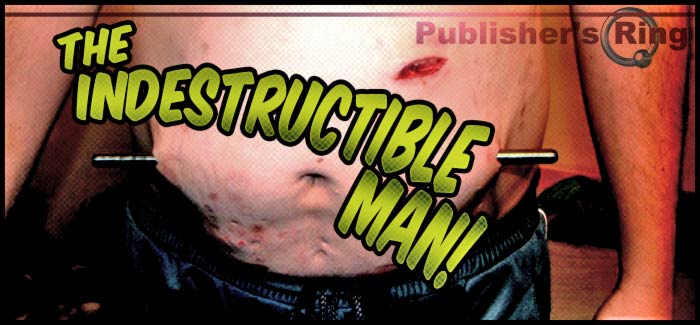
Please note: This is an explicit interview, with explicit photos and video. It is an interview from the upcoming book Tortured and Loving It, a collection of interviews with BME/HARD members.
A few months ago I met “FK” in Germany. His personal play involves intense body insertions with dramatically large (and often unorthodox) objects, as well as other play and body modification activities. Due to an abnormally well developed immune system, he is able to push the limits of “if it feels good, do it” farther than most. The interview below is a translated version (the interview was done in German) of our conversation about his remarkable games.
The video (8 meg WMV file) below give you an idea of the type of play and body ritual he enjoys. I have included ejaculation and clear sexual play in the video so there’s no doubt that this is voluntary and enjoyable play. Again, let me emphasize that this is explicit, an adult interview, and that the activities you see here are dangerous and should not be emulated! Play carefully and know your limits!
* * *
Shannon/BME: How did this type of play begin?
FK: At first I experimented with pins and so on. This was when I was about thirteen years old. I was very drawn to the feeling of putting something inside my body.
At first it was curiosity — how much could I take? Then I found that pain excited me sexually, and over time it became more and more extreme. The thought of putting things under my skin is very hot and exciting. After pins I moved on to skewers, and sometimes 10mm stainless steel rod and aquarium heating rods (not turned on).
To insert the larger rods, I use very sharp special scissors that are normally used for cutting fishing line to make the incision. I’m an avid angler, so I always have them around the house. I usually don’t leave the objects in for long, no more than a day. Last year I inserted a metal rod in myself and rode a 100km bicycle route, which was quite extreme! This was an experiment to see how much I could stand and for how long.
Healing from heavy play takes two to four weeks, and then everything is back to normal. I’ve stopped now because of the considerable scars that I have from the play.
Shannon/BME: What do you think about while you’re doing this play?
FK: Obviously it hurts, but to tell the truth, this sort of pain excites me greatly. I don’t think about anything while I’m doing it, it’s just a turn on. It is a kind of “sex”, and is very exciting right up until the orgasm.
Shannon/BME: Do you think that you have strengthened your immune system with this sort of play?
FK: My immune system is naturally extremely strong. I’ve never had an infection or other complication, in my entire life, which is already quite unusual. I can eat poisonous fruits and mushrooms without difficulty. Drugs and narcotics are almost completely ineffective on me — a few years ago I had surgery with general anesthetisia and I required three times the normal dose!
Shannon/BME: It’s as if you’re a “superhero”…
FK: It’s a mystery to me as to why my immune system is so durable! As I said, I’ve never had any inflammation or infection my whole life. The only reason I stopped was because of the scars, but on the other hand, the scars are a sort of body decoration that I carry with pride. Perhaps I’ll do it sometime again.
Shannon/BME: Have there been any complications from your play?
FK: Other than some bleeding, I’ve never seen any danger in what I do, but I know my body very well. If I push a metal bar through my belly, I always remain in the fatty tissue, in order to not hurt anything vital. I do not sterilize the items but I clean them with soap and water — as I said, I am practically immune to germs. If I wasn’t like that, I’d probably not be here right now!
Shannon/BME: …and how in the world did you find out that you could survive poisons???
FK: That was coincidence — as a child I ate eat poisonous mushrooms and had no complaints! Then when I went to the dentist the anesthetic didn’t work — getting a tooth pulled without it is not fun! Later, in the hospital, for a tooth operation they put me completely under, and afterwards the anestheologist told me the does could have killed a cow… A while ago I smoked a joint with a friend. It was strong and my friend was totally stoned, but I couldn’t feel it — I’d probably have to smoke a whole lawn to get stoned!
Shannon/BME: Do narcotics work at all for you?
FK: Haha, yes, but I have to take a lot! Everything works, I just have to take a larger quantity than others.
Shannon/BME: What made you decide to document it with photos and videos?
FK: I always photographed and videotaped it so I could watch it over and over and remember it, especially because I don’t do this type of play any more. The last scene I did was the one you see in the “stomach torture” video on BMEvideo.
Shannon/BME: Do you do other play or body modification as well?
FK: My other passion is extreme anal expansion. I insert bottles, fruit, and other things into my ass. In addition, I enjoy fisting myself and being fisted by others. I don’t have any tattoos, but I have piercings in my cock, scrotum, and nipples.
Shannon/BME: How do you explain your scars to partners?
FK: I tell them a story about how I went through a window. Many of my scars are actually from a car accident about twelve years ago — I was almost cut in half due to the car not having safety glass… My current partner is not bothered by the scars, but finds it all a bit mad. He mostly fists me, and says that he likes the scars a lot.
Shannon/BME: Did you heal well after your car accident as well (I assume that wasn’t exciting sexually)?
FK: Yes, amazingly fast. I had a broken nose, a dislocated shoulder, cracked ribs, and my belly was nearly completely slit open. It was definitely not sexually exciting, but after three weeks I was back at work farming fish.
Shannon/BME: I hope this isn’t a silly question, but do you consider yourself a sort of “fakir” or is there any spiritual aspect to what you do?
FK: It’s not a silly question, but quite justified. However, there is no spiritual aspect and I am not a fakir. I much prefer sleeping on a comfortable mattress than a bed of nails!
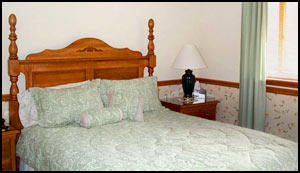

Shannon Larratt
BME.com
